March 19, 2023
Martha O'Kennon
The cycle broke. This past week was different in several ways. It snowed a couple of inches, oh no,that wasn't it. The pond was frozen over. Not different. It defrosted. Not different. As I write this, it is frozen over again. No, what was different was that we had a couple of days of temperatures above 40 F, and at some points nearly 50 F. The Sun Shone on some of that time, and at those moments I saw creatures I hadn't seen for nearly a year. More to come!
Remember that there is information in the name of the file for each image. You can see it by mousing over the image - look at the lower left of the screen. Or you can click again on the image to get to the (usually) larger image. Then the info is displayed in the address line above. Sometimes the second click will actually display a different view of the original image.
The Winter Ants were hiding out from the Winter Weather, but a couple of days ago, out they came. On the 17th, there were an uncountable number (don't get excited, Mathemagicians!) on the South Wall, so many that I almost got some shots containing two Ants at a time.

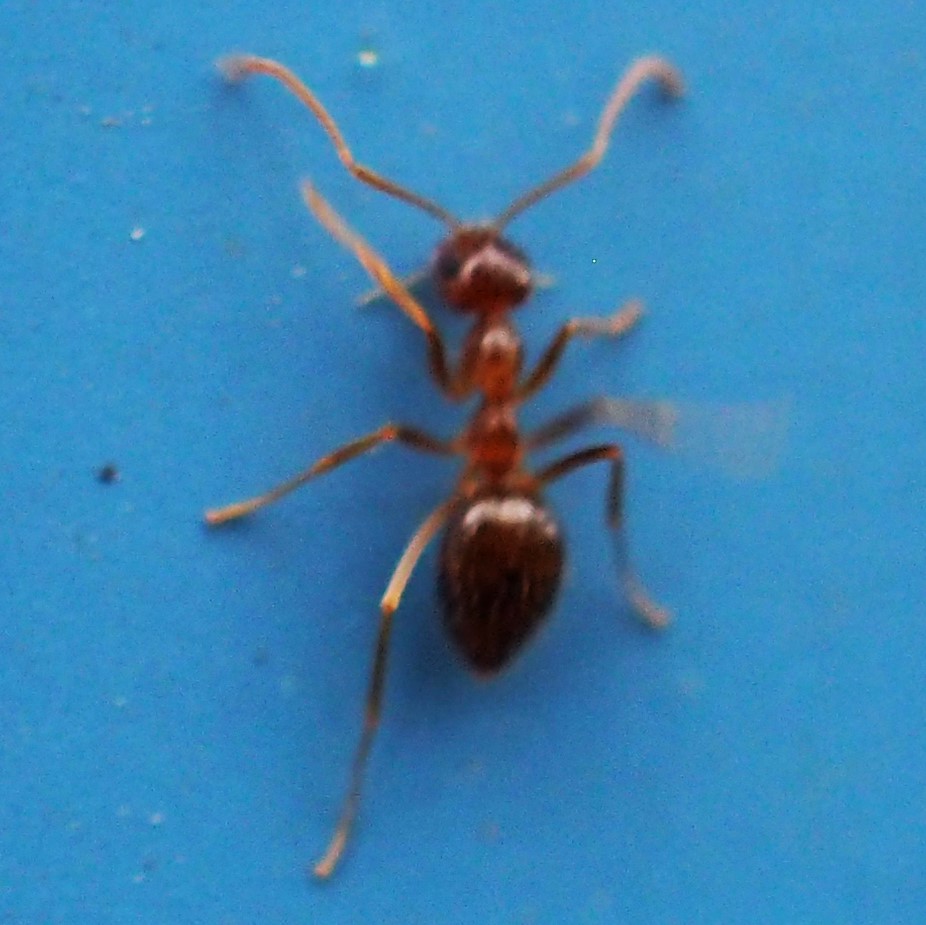
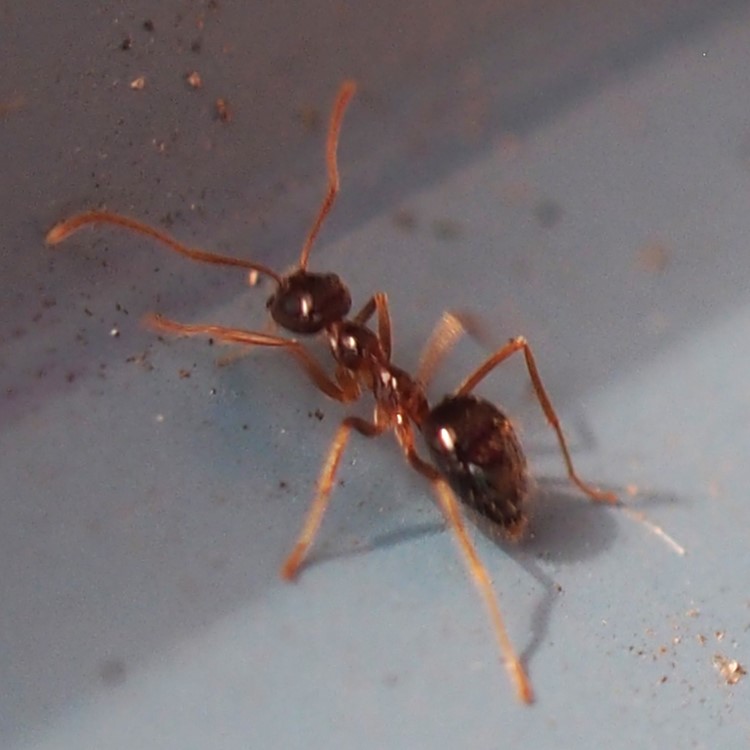
Were there any Bees? or Beetles? As for Bees, here are three pictures of a Western Honey Bee in that delicious Early Crocus! Wait, how can I be so sure this is the right answer? There are only two possibilities: this creature is a Bee or a Fly. Now look at picture 1: see the little pouch full of pollen? Flies don't have Pollen pouches, so this is a Bee. But we know that in the Midwest, there is only one Bee out there, and that's the Western Honey Bee! Don't you love Mathematics?
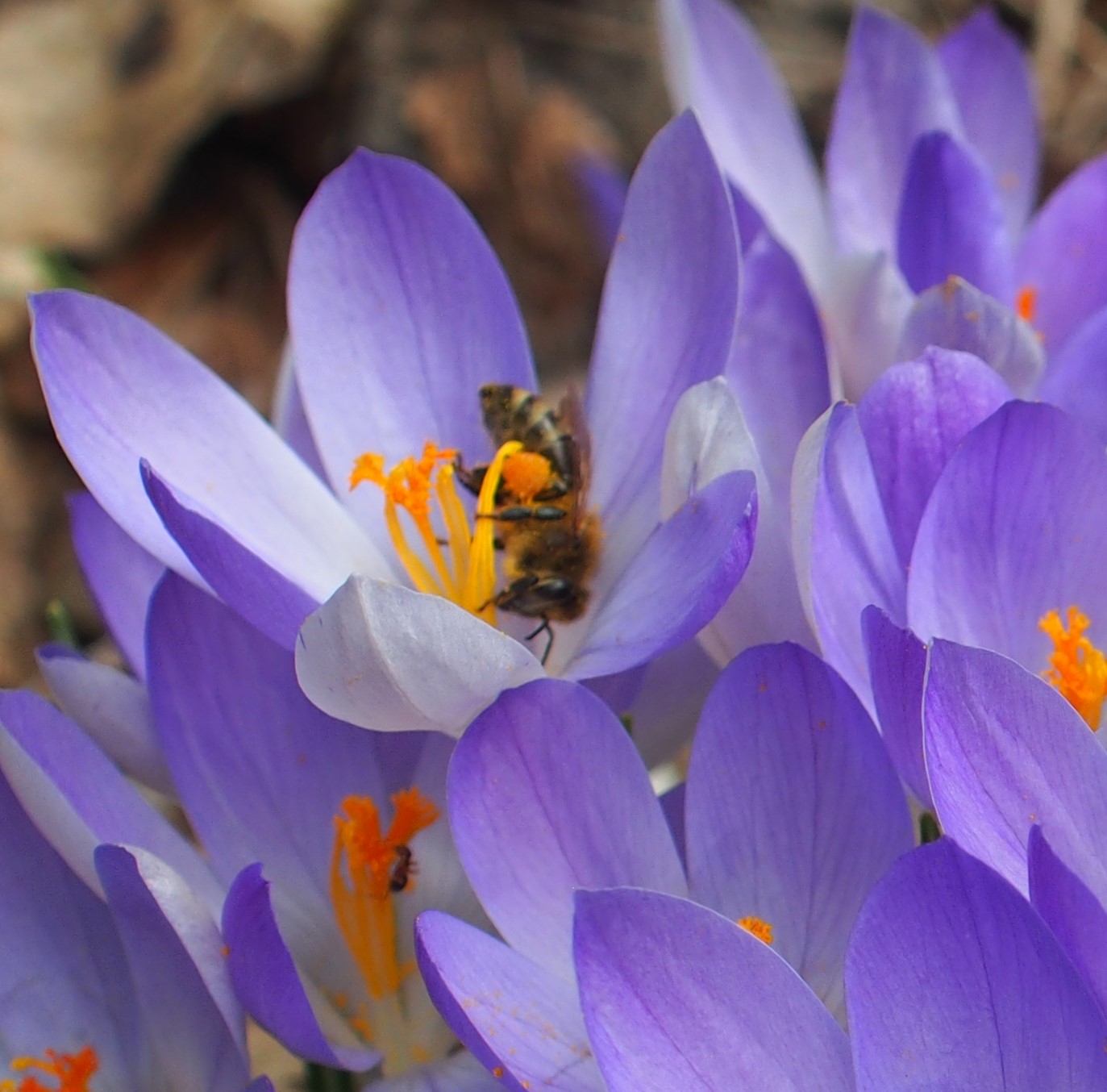

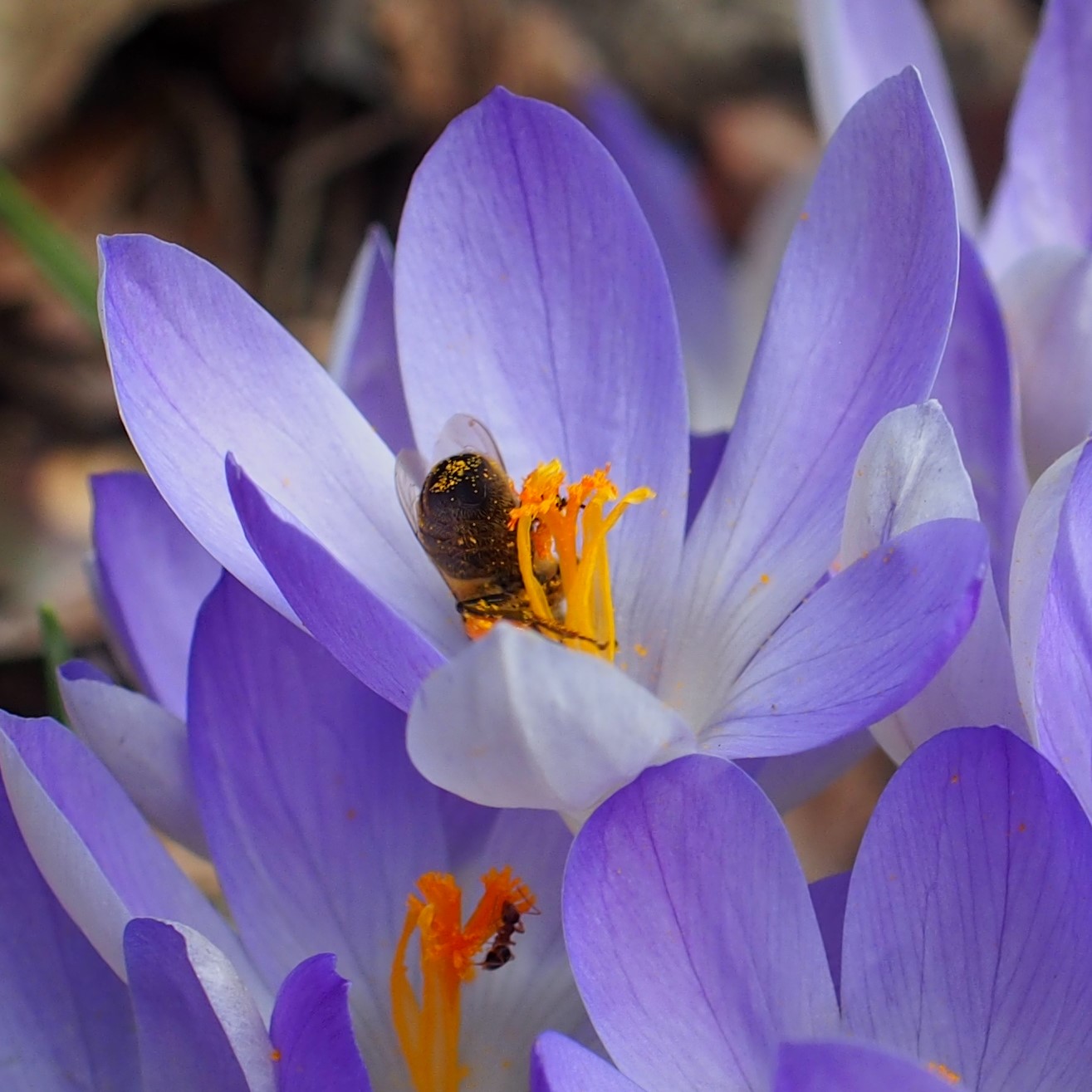
If there were any Beetles, I missed them. We'll just have to wait a bit. But Bugs? Those Eastern Boxelder Bugs are the stars of that show (as usual, ho hum, ho hum). Leafhoppers? Why yes, one of those members of Genus Balclutha patiently posed for several pictures.

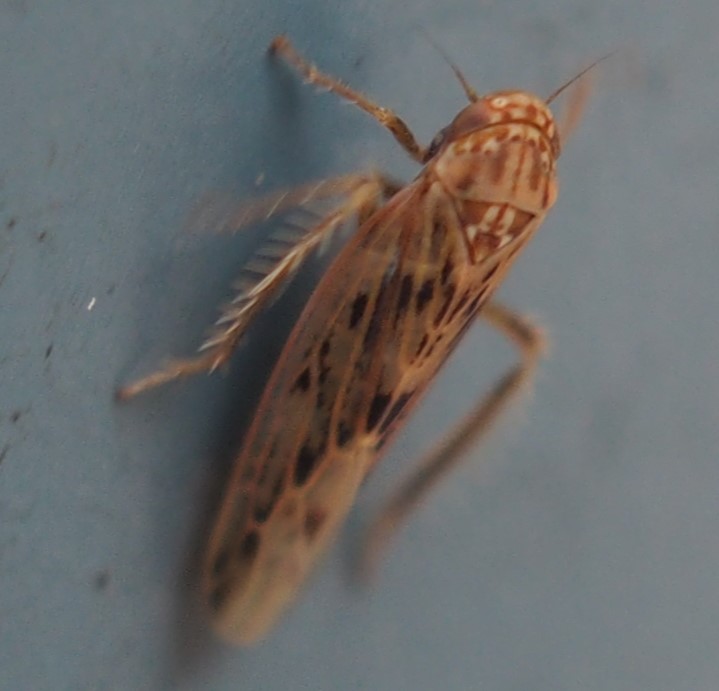
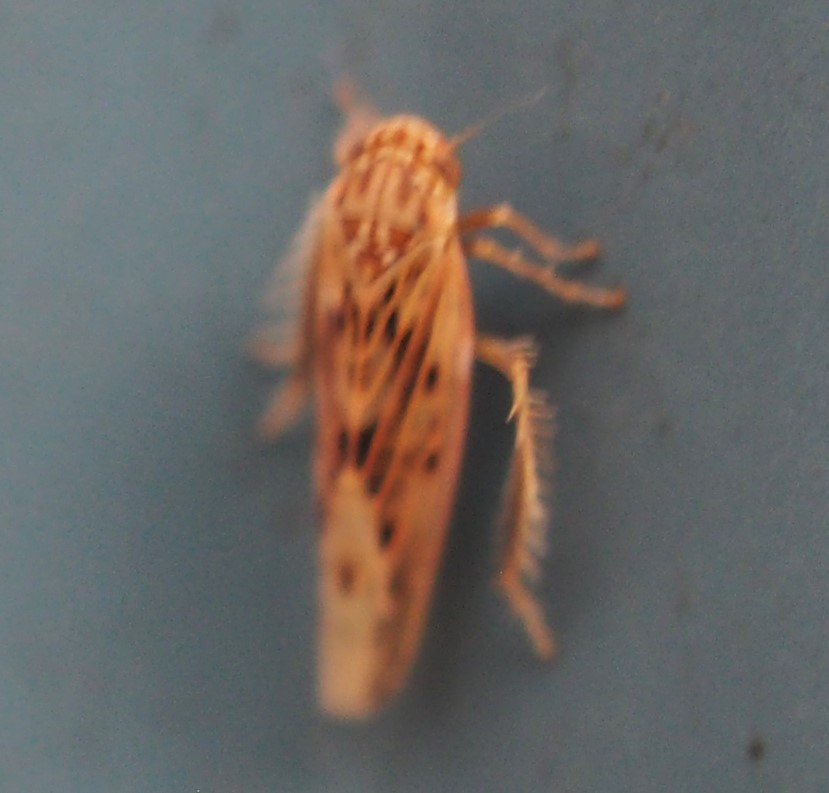
The Barklice are still playing it scarce. But here we see two clutches of Barklouse eggs, one with five and one with three eggs. And last, we had at least this one kind of picture of Graphopsocus cruciatus - maybe that's two of them - count the legs... They or it seem to have been only recently moved from Nymph to Adult. Often the legs and wings are not neatly arranged the way we're used to seeing the Adults, and the colors are not quite done developing.

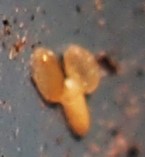
 just eclosed 3 13 23 1.jpg)
So let's look at some of the Flies we saw this week. On those two sunny days, there were lots and lots of them. Many of them were Fungus Gnats. I finally thought I could identify those by the spikes on their legs.
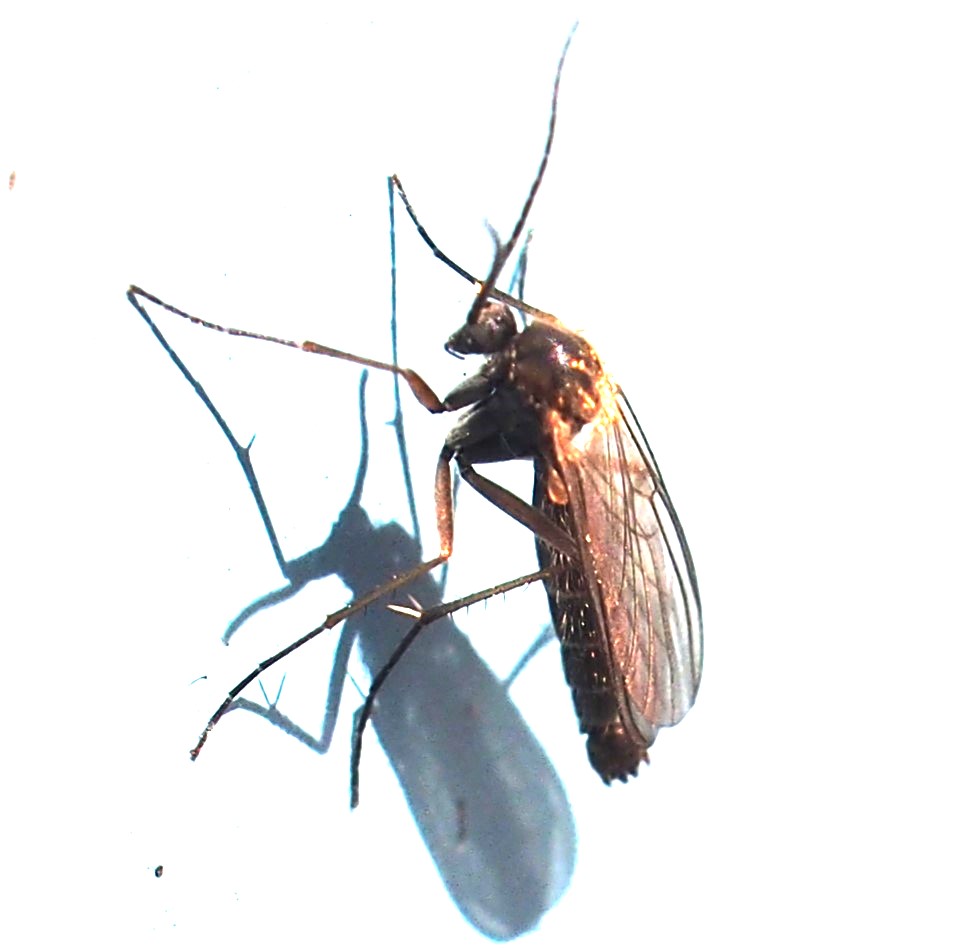
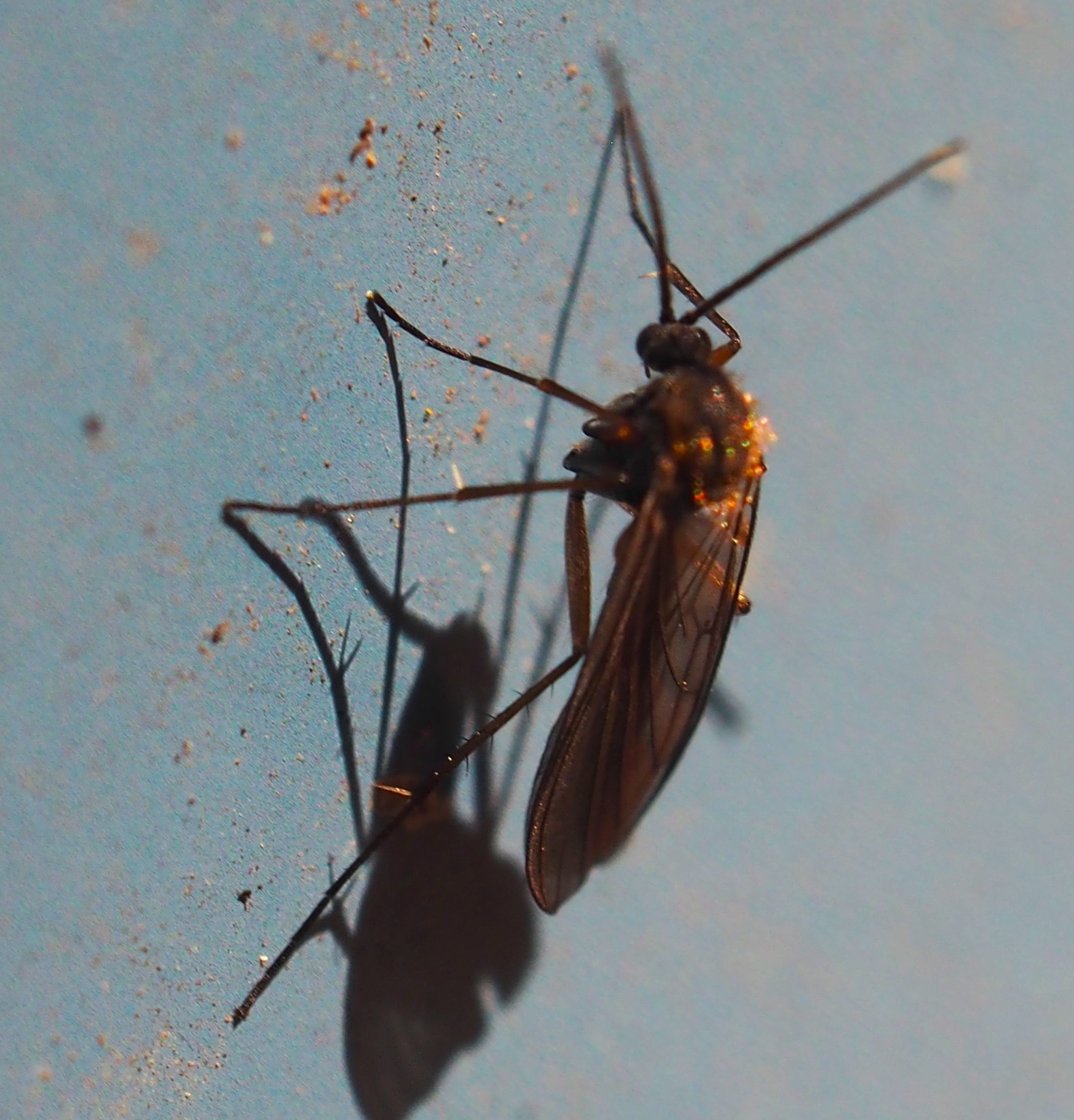
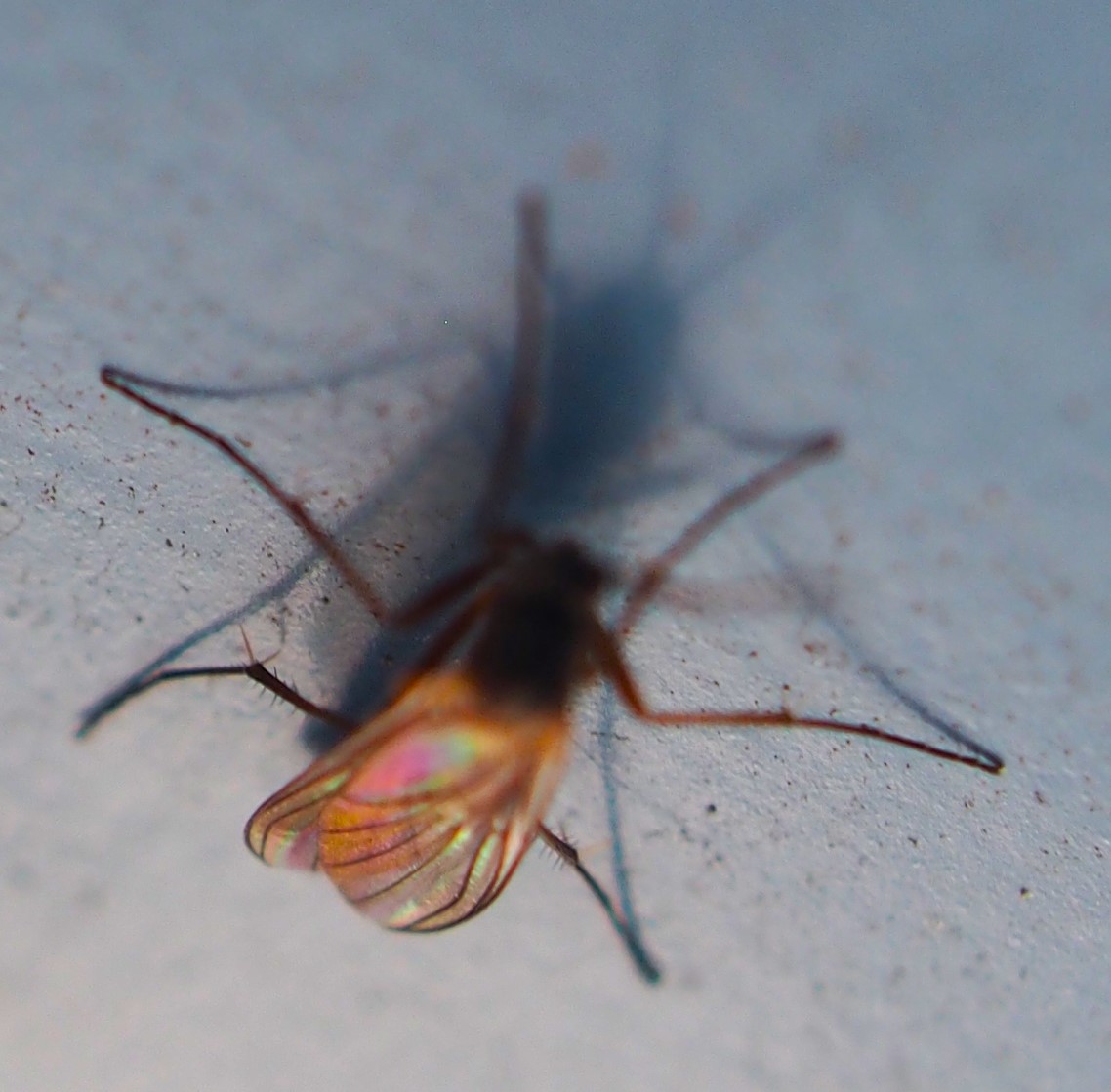
Then Someone told me that not all Fungus Gnats have those spiky legs, and further that not all
Dark-winged Fungus Gnats had dark-colored wings. Here are some more possible Fungus Gnats.
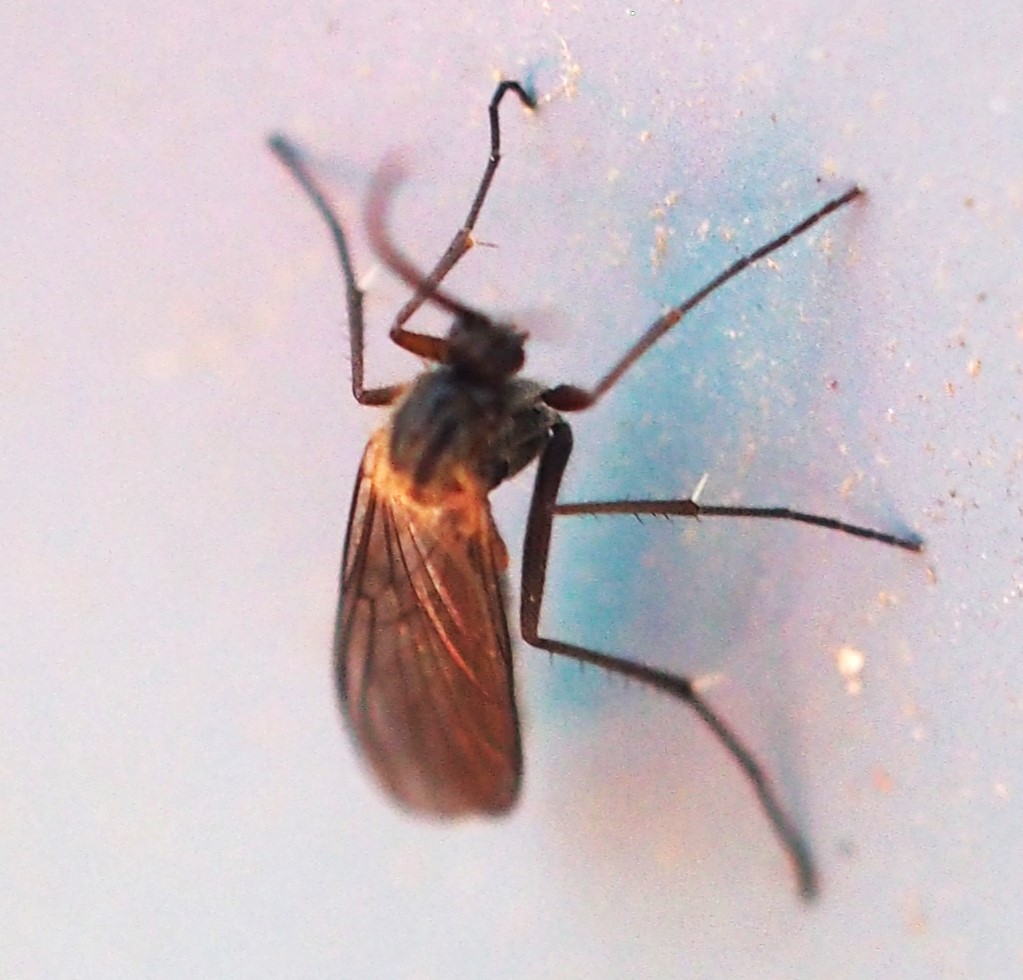
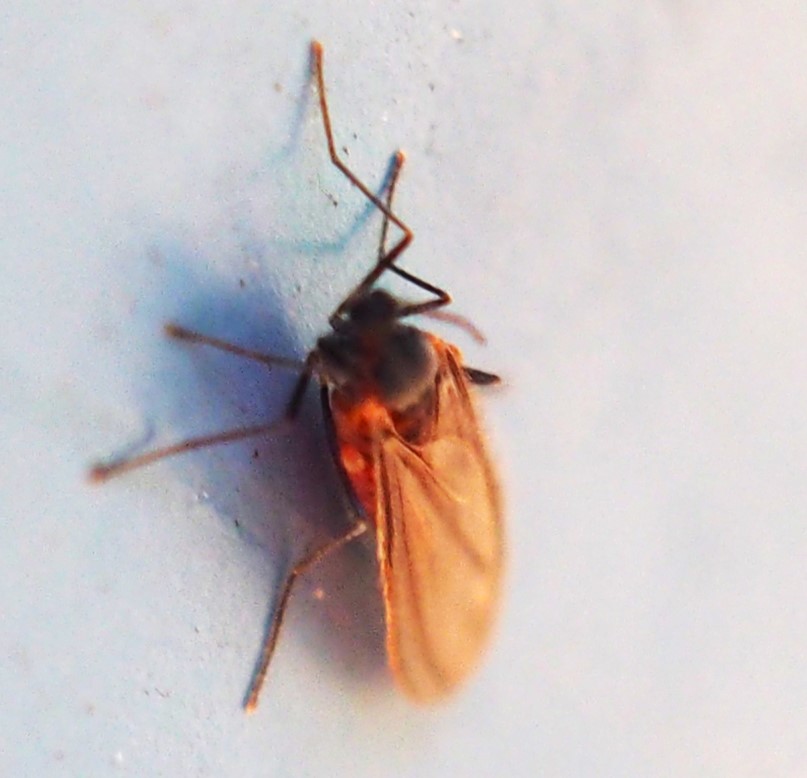
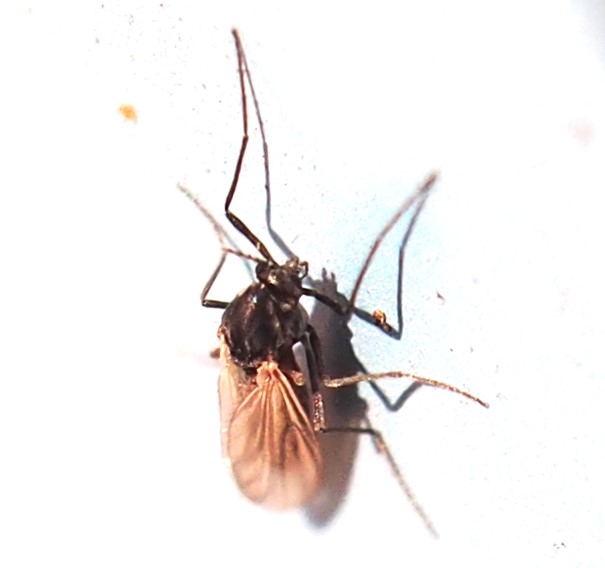
For a while I thought I was gaining on Gall Midges. After all, all of them have these lovely fancy antennae. Or do they?
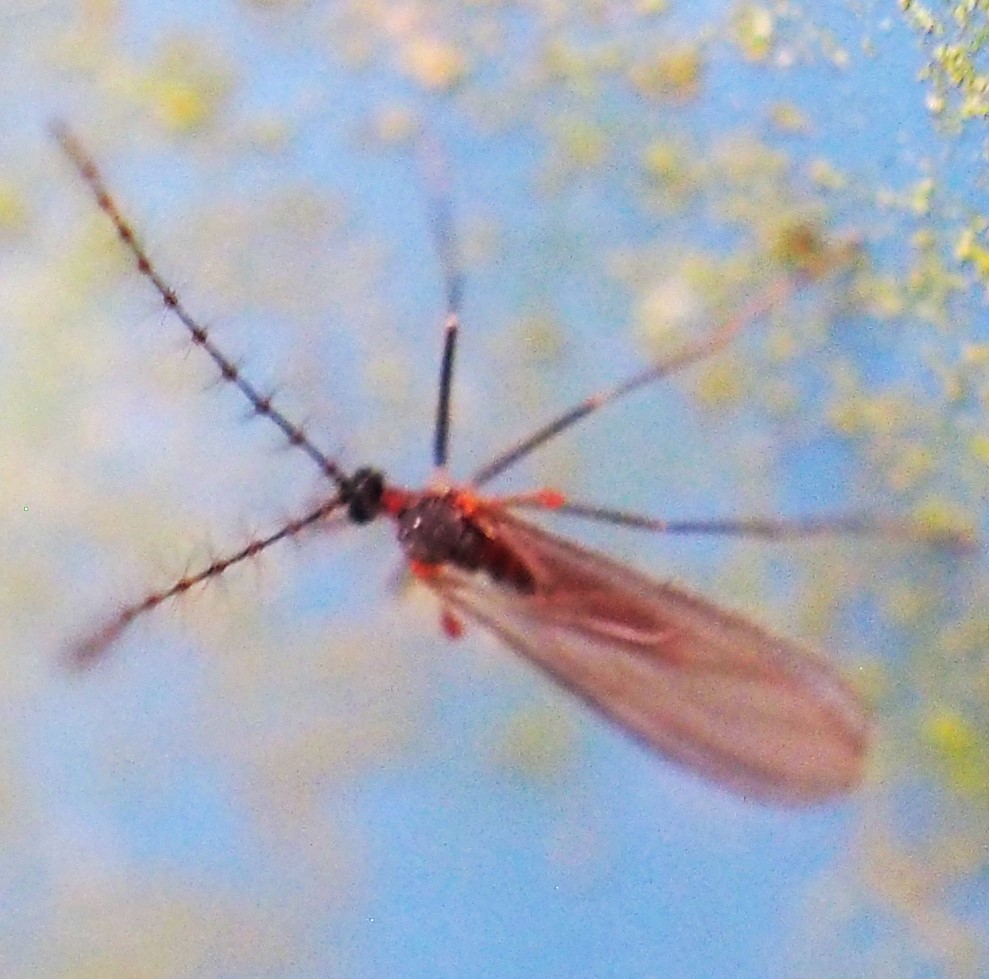
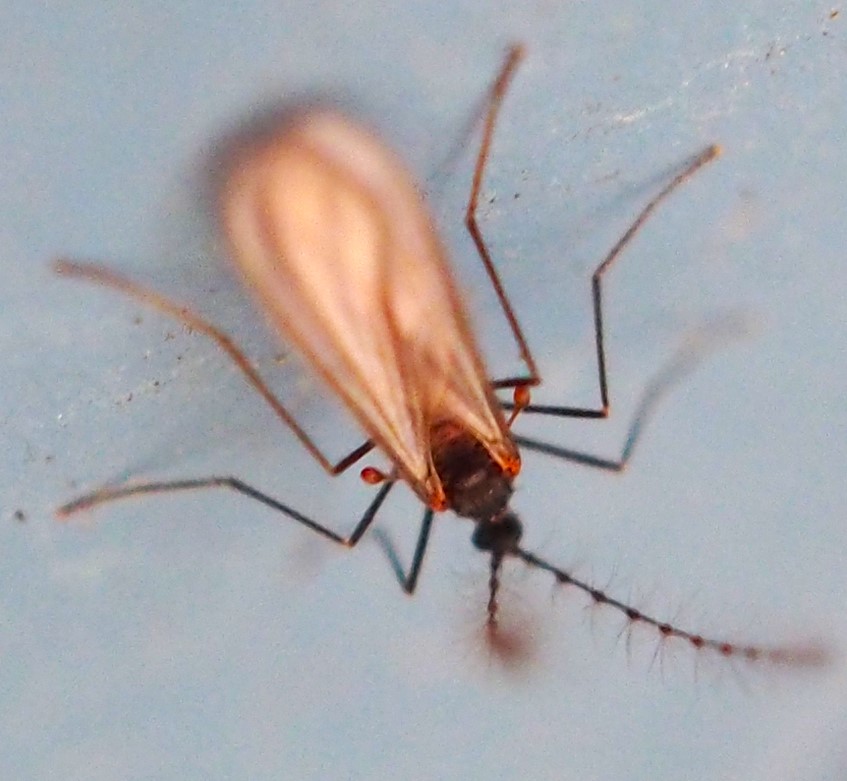
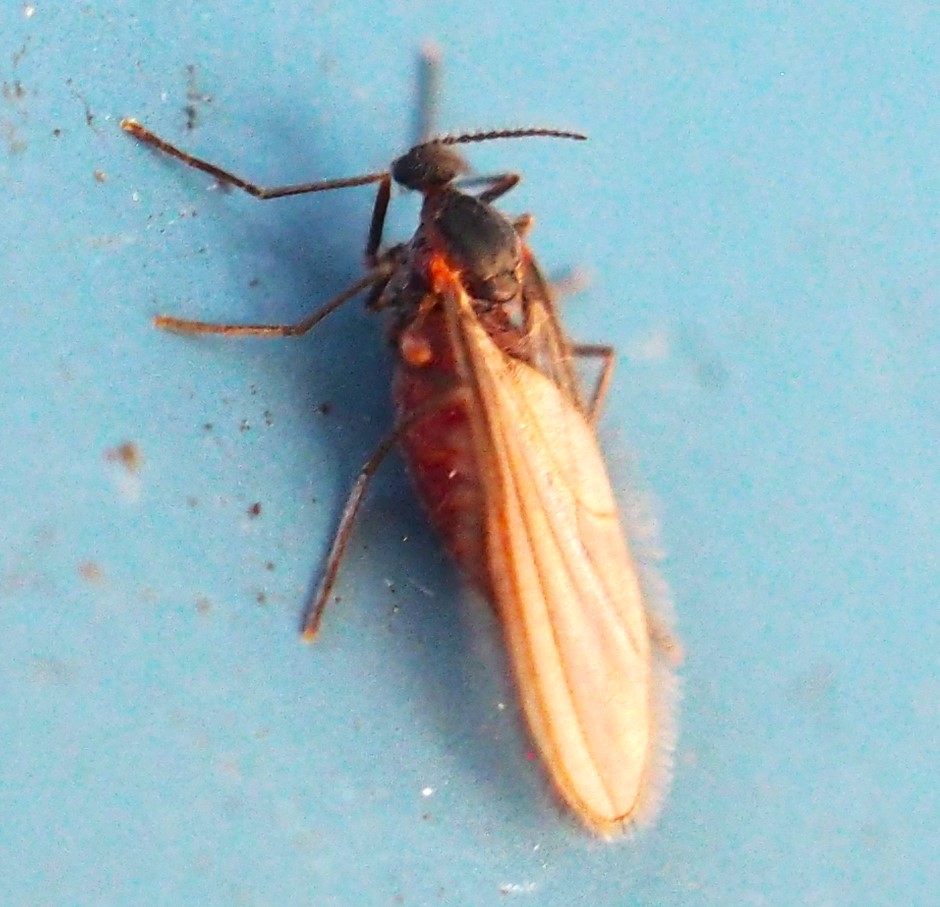
At least most of the flies I've seen this week are Midges, mostly Non-biting Midges. A lot of them have long abdomens with a squarish end. Maybe you remember that male Midges, like male Mosquitoes, have fluffy antennae, like number 2 here. In the summer I used to find Midges with lovely shades of green wings and/or bodies.
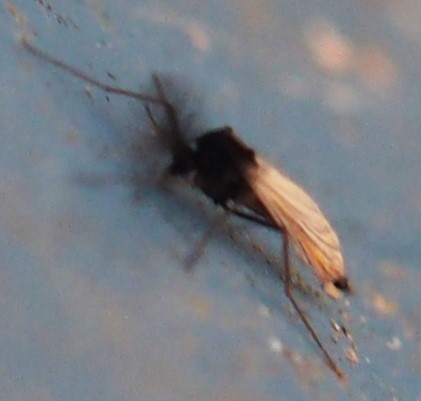

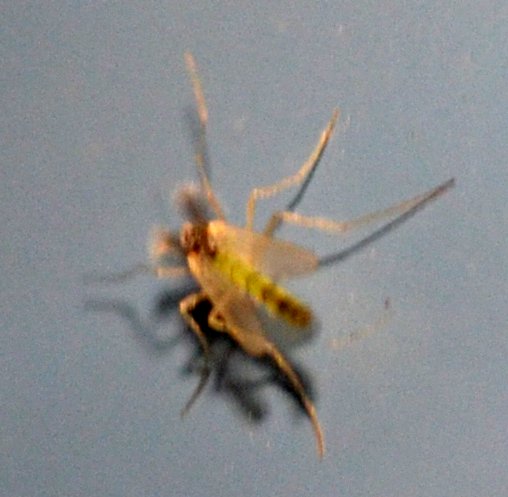
These Flies belong to the Root-Maggot Flies.
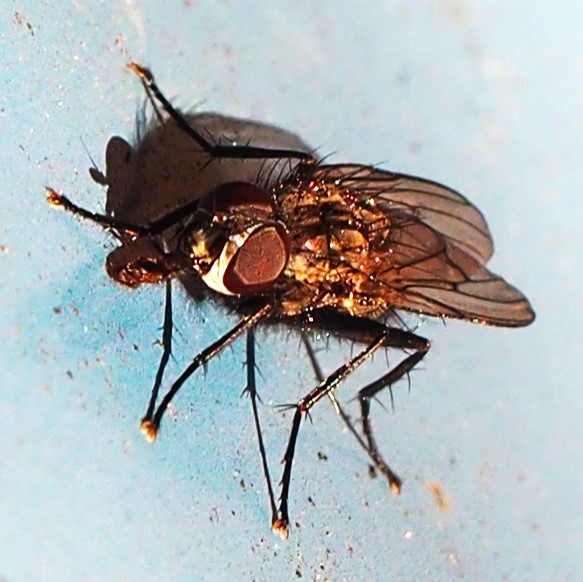
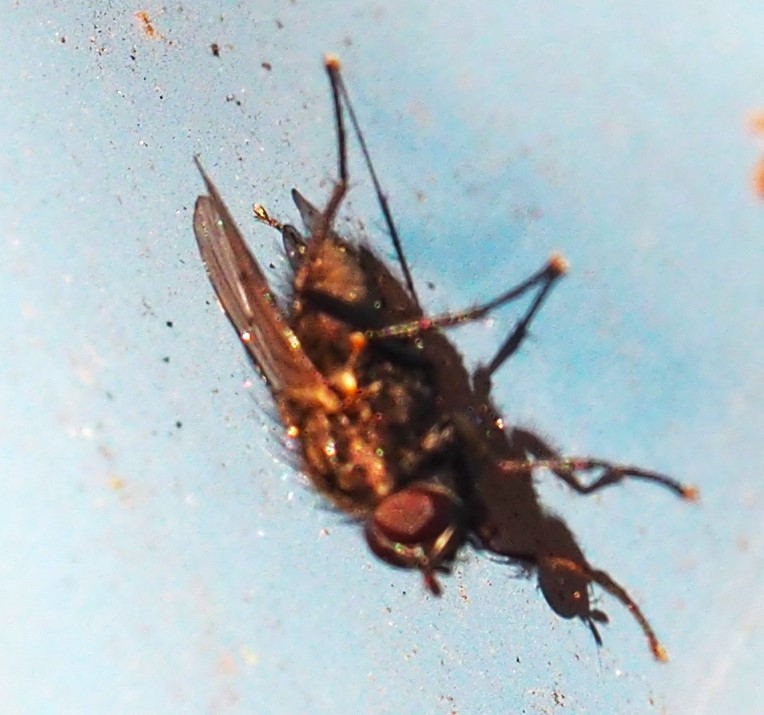
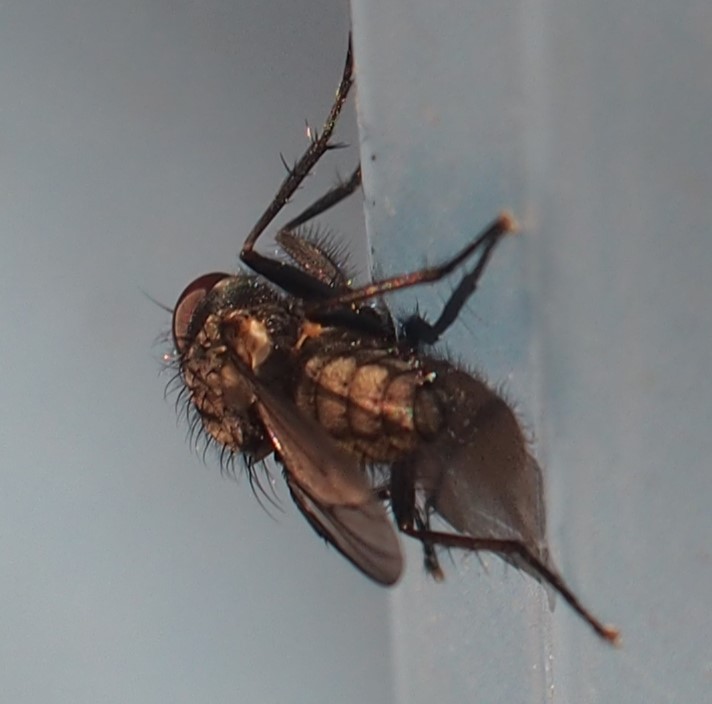
Surprise! This week I saw for the first time in ages (not since Fall at least) this member of genus Suillia, and probably S. quinquepunctata. Latin buffs, how many spots do you see on its wings? About 5?
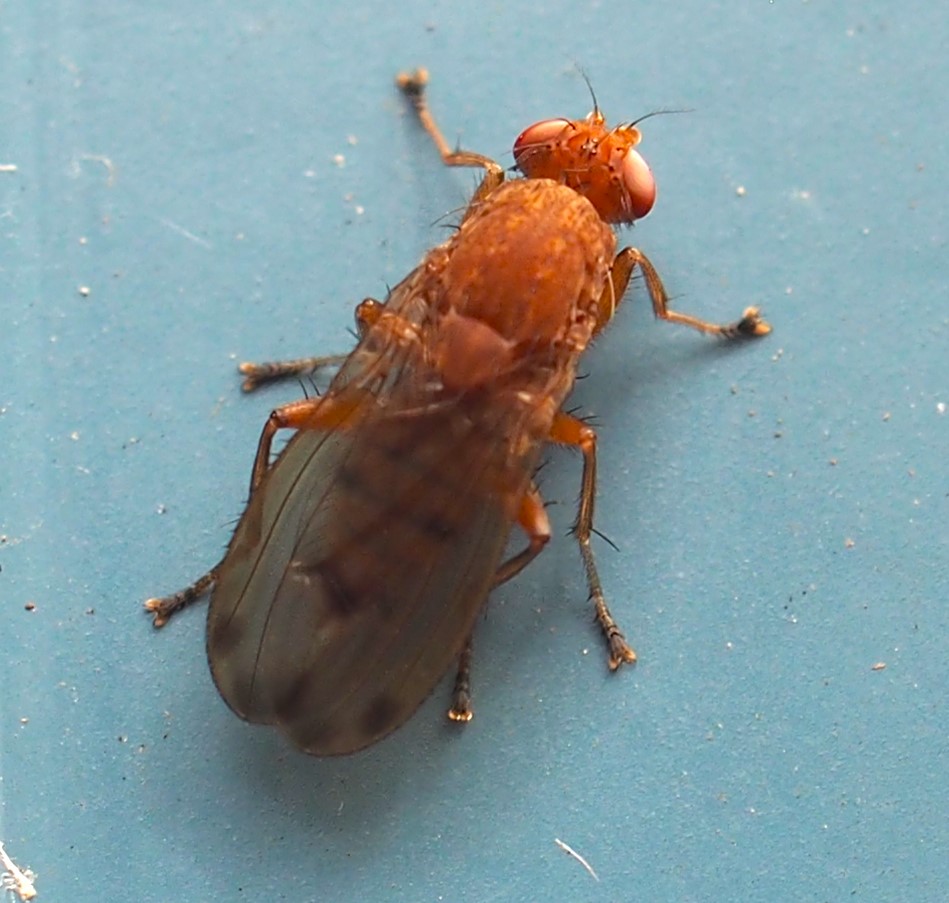
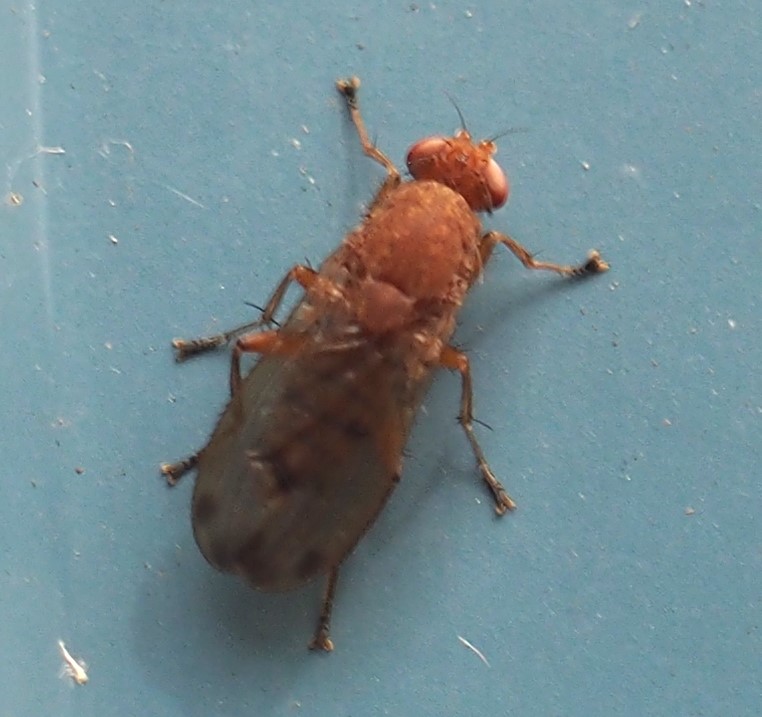
Last week I admitted, "For the first time in a long time, I didn't see a Looper this week." Not a single Looper (larva of Geometrid Moth)?? Well, this week I can honestly say, I've never seen so many Loopers, seemingly larvae of different Moths! The second one of these two makes up for the fuzzed-out part of the first one. The third is a distinct one.
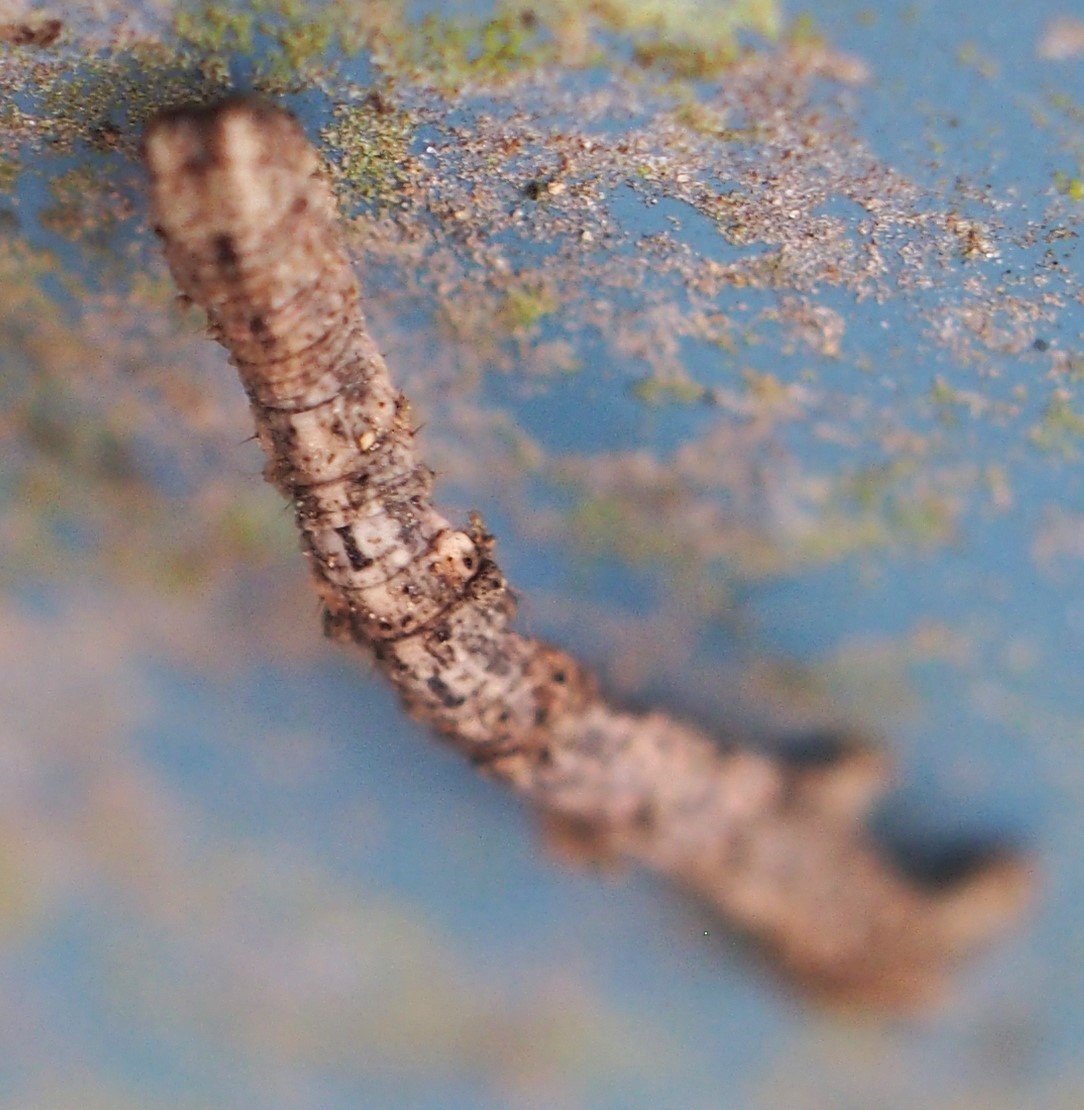

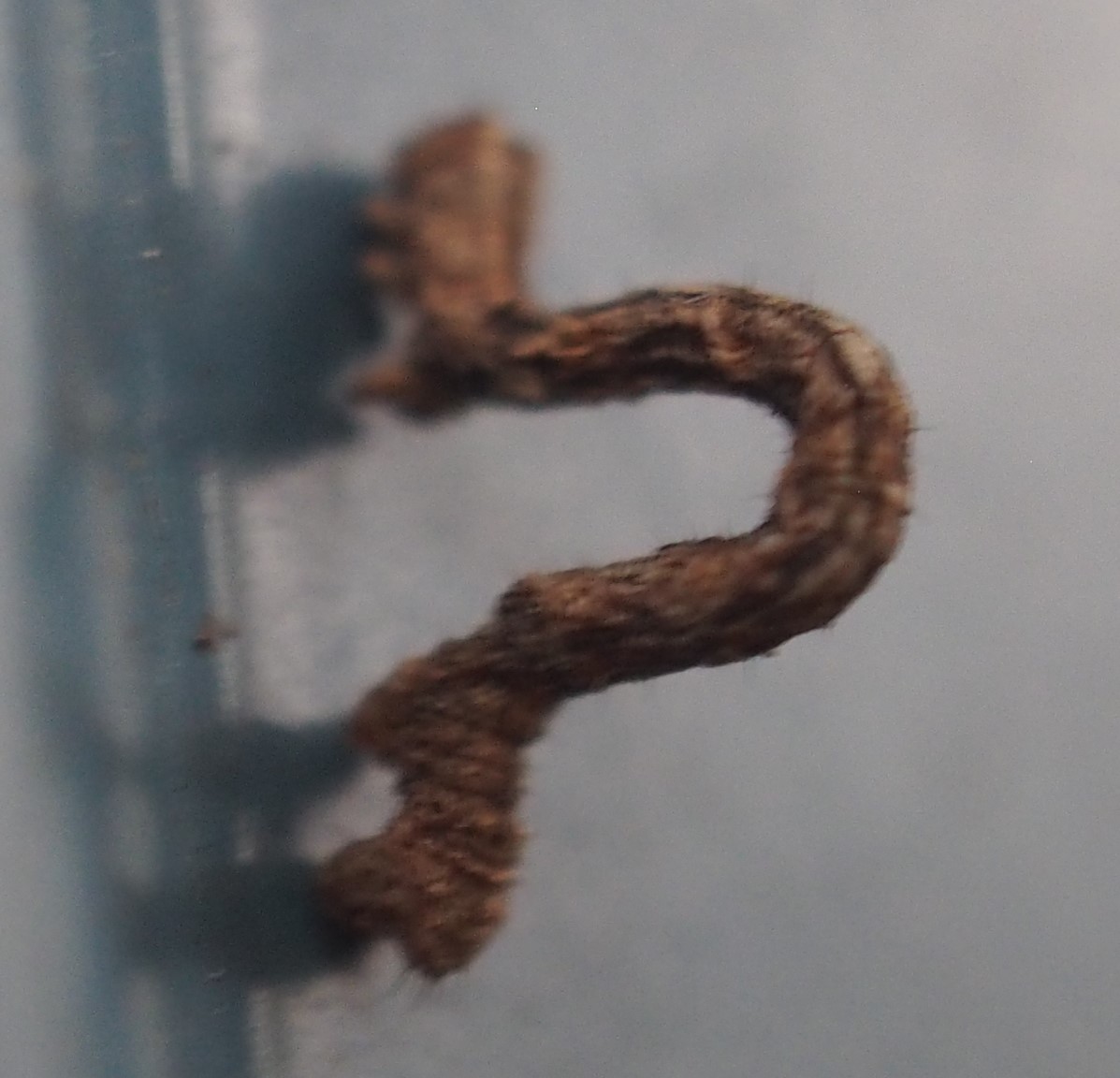
Each of these three is a different member of the Looperfest.
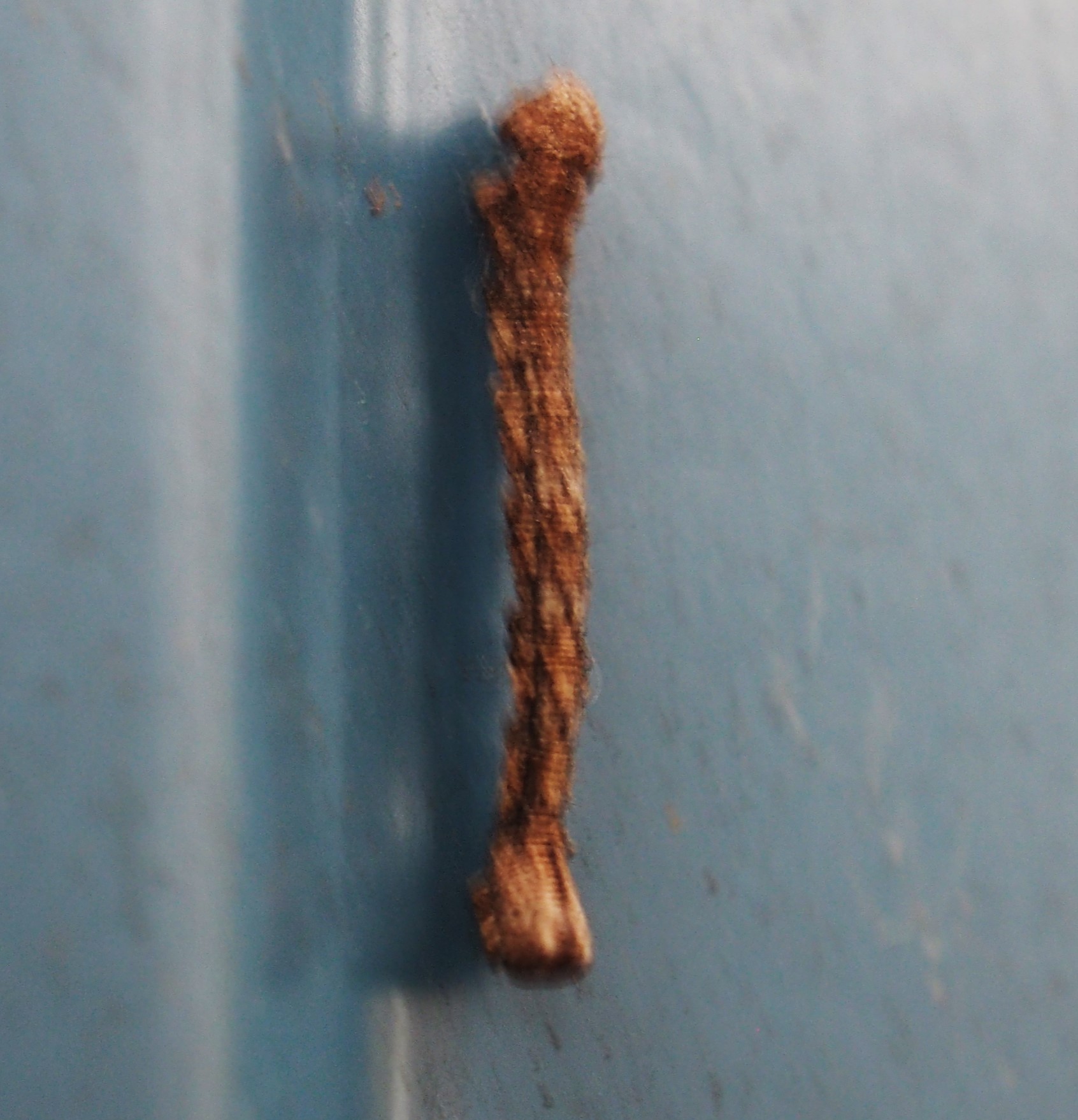

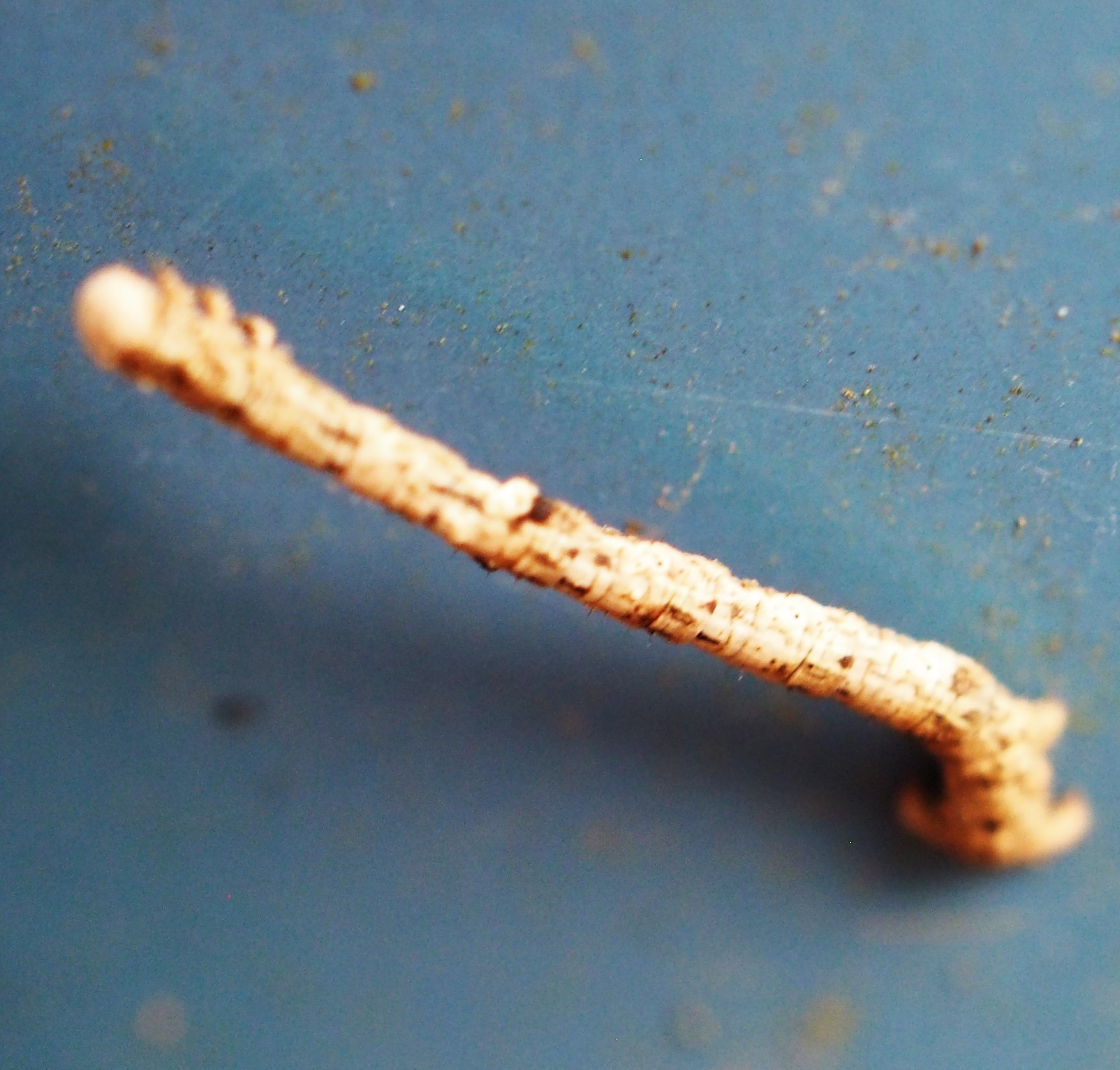
Maybe we have enough flowers now to take a short Flower Walk. First of all, let's get one of probably the last of the Winter Aconites, which have almost finished their almost two-months-long story for this year. Next to bloom (in our yard, as opposed to the stand in the Seelys' yard, which introduced the season) was the Snowdrops. And third came those exquisite Early Crocuses. For some reason, those Crocuses bloom in such profusion and still don't seem to crowd any others out. I'll end this Blog today with a collection of photos of these lovely things.
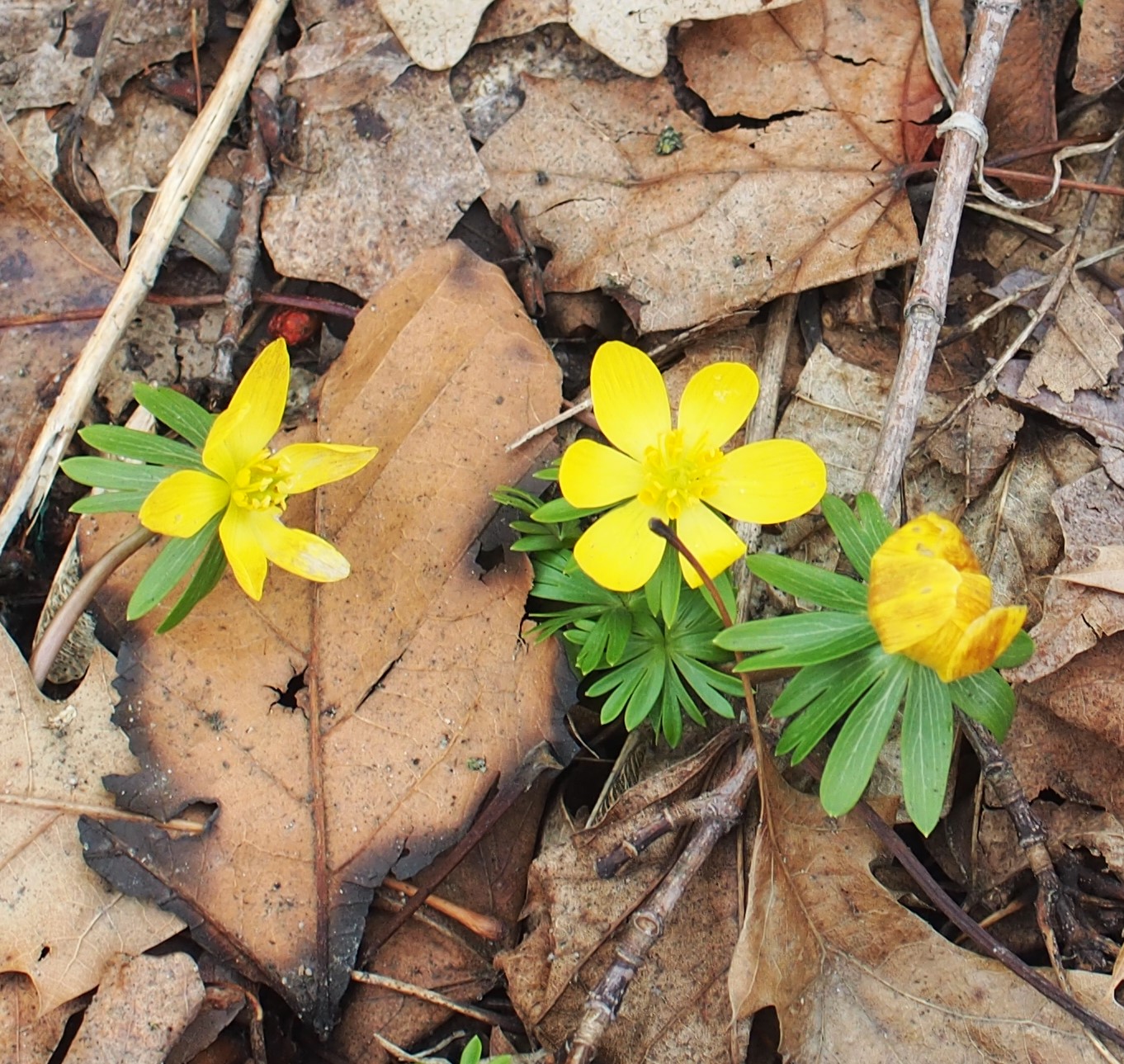
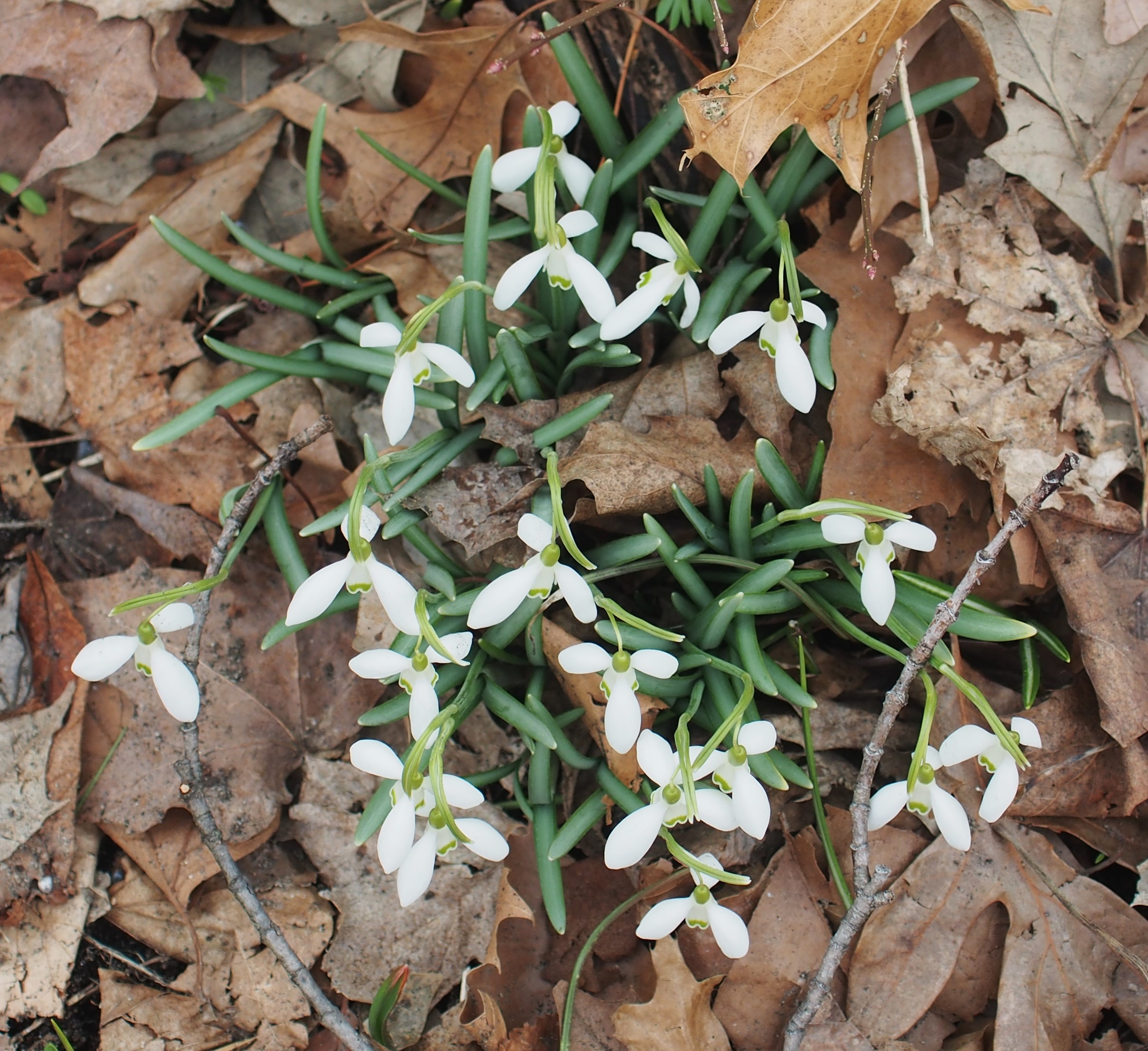
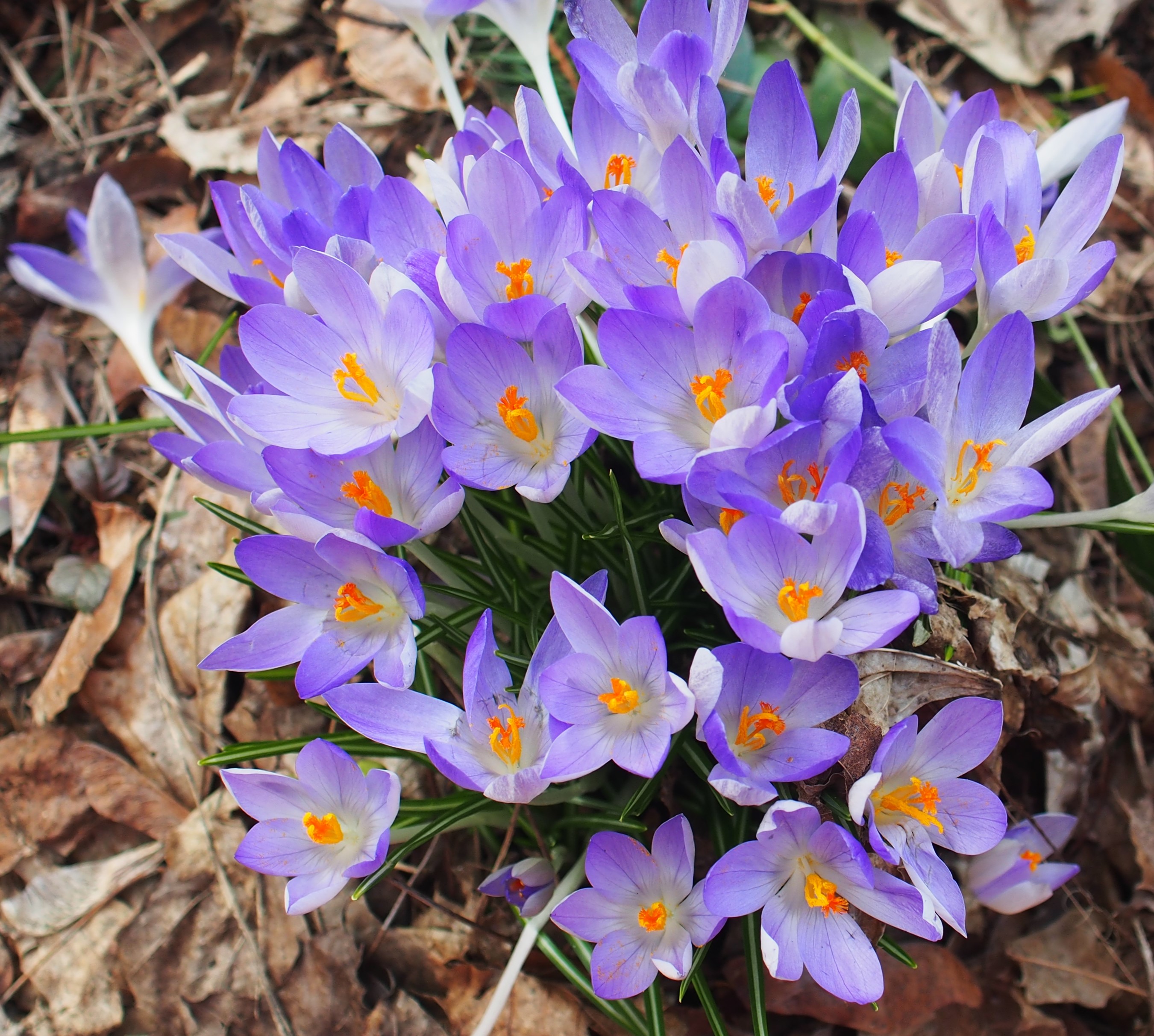
The next Crocus to bloom is this one, with its darker purple and rounder shape of individual flowers.
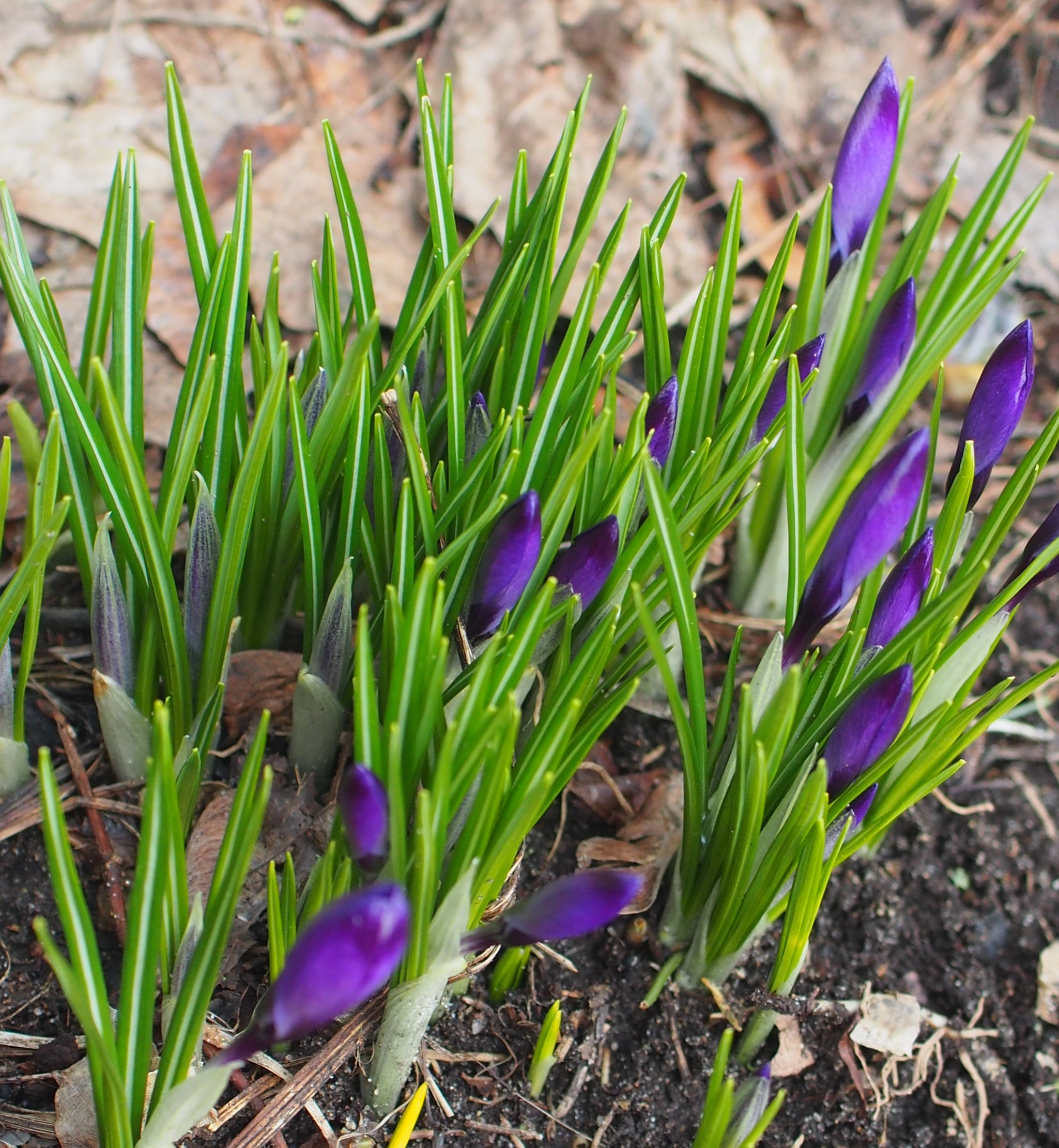
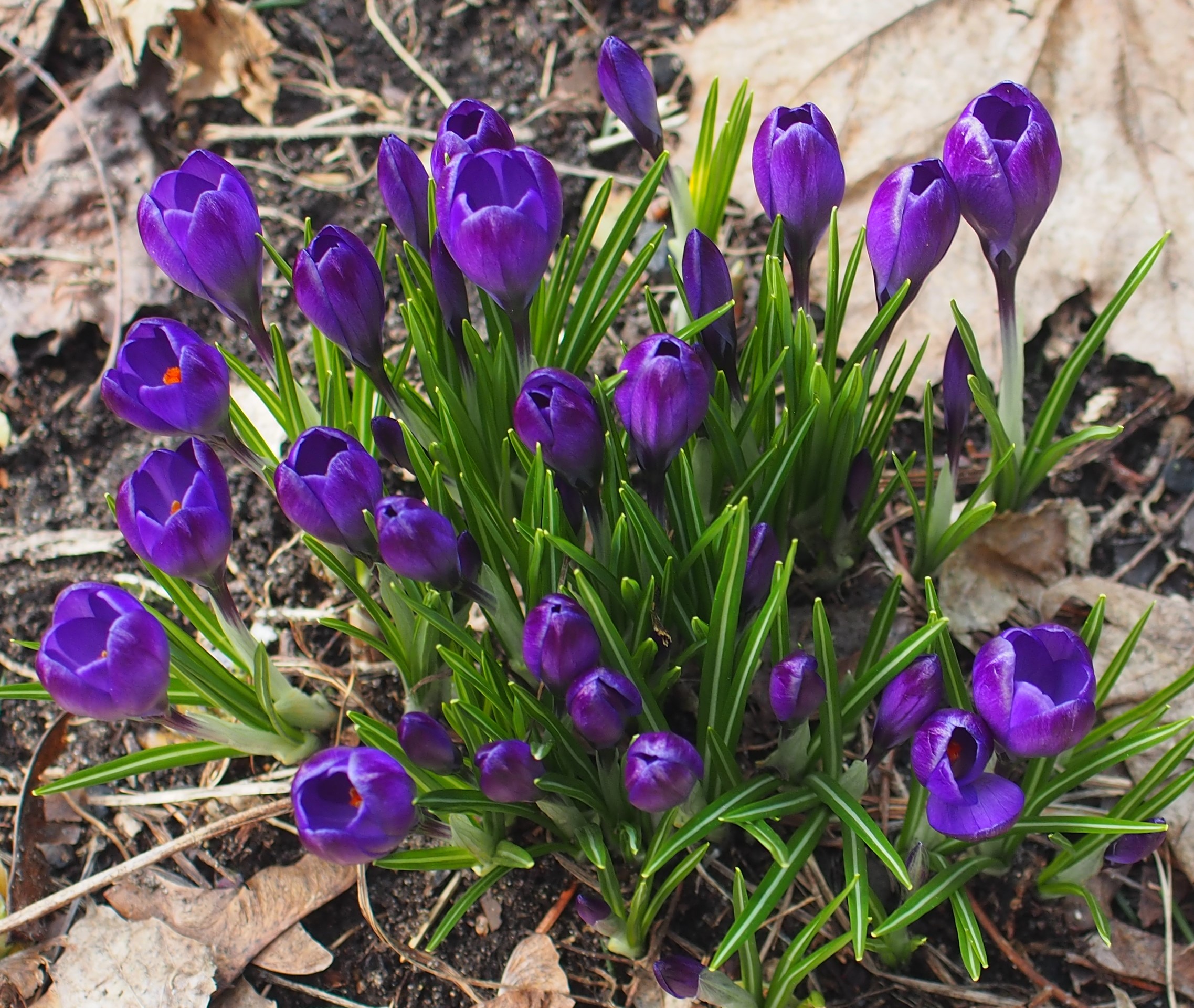
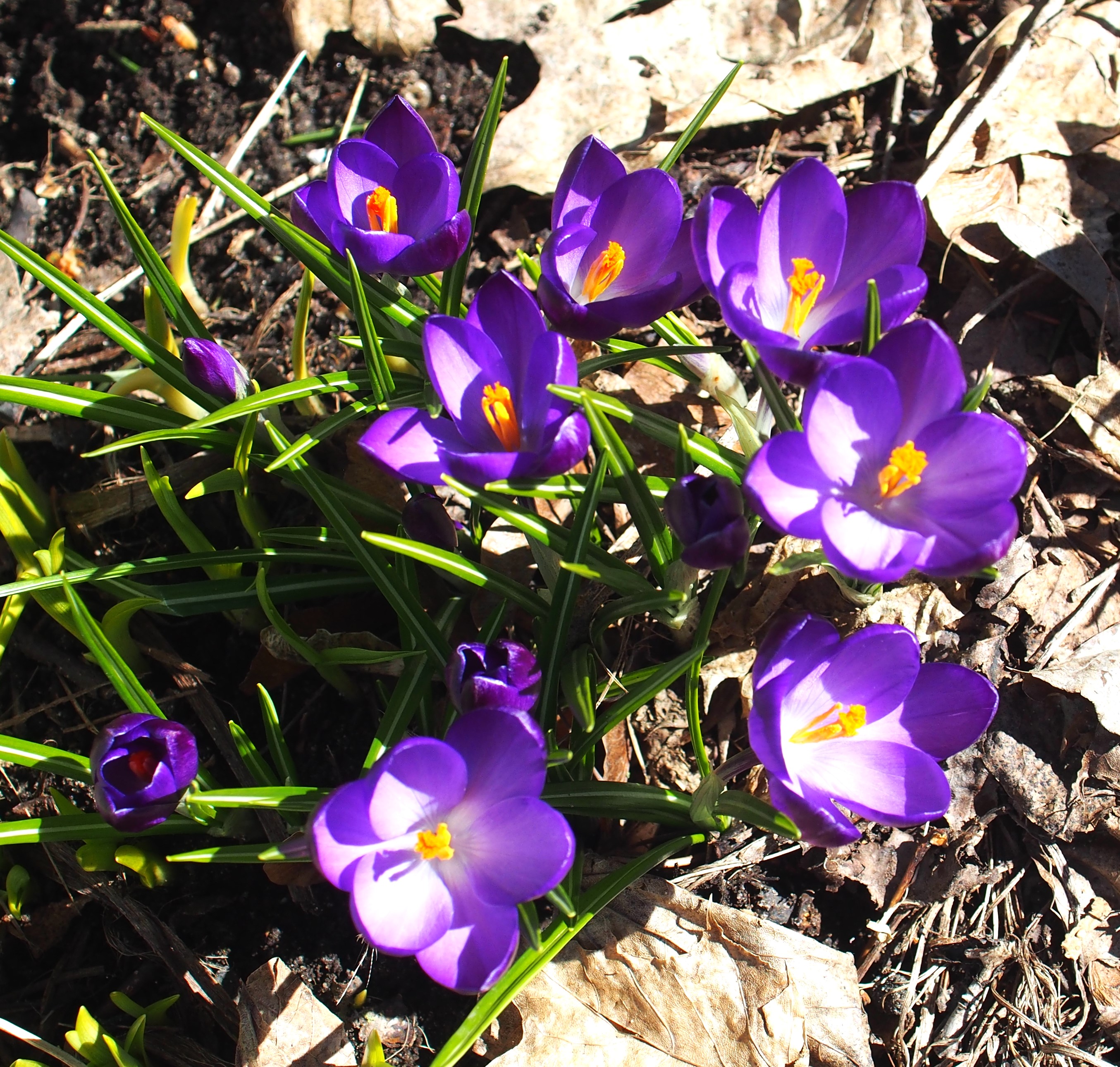
I didn't recognize this one at first, but it's a White Hellebore coming up in the back yard. Second is the Purple Hellebore in the front yard. Notice the leaves shown are the old ones. The new leaves come up after the flower buds. Third is a closer shot of the Purple Hellebores. This has been a wonderful plant or it has found a home in the front, whereas the White one just sort of plods along out back.
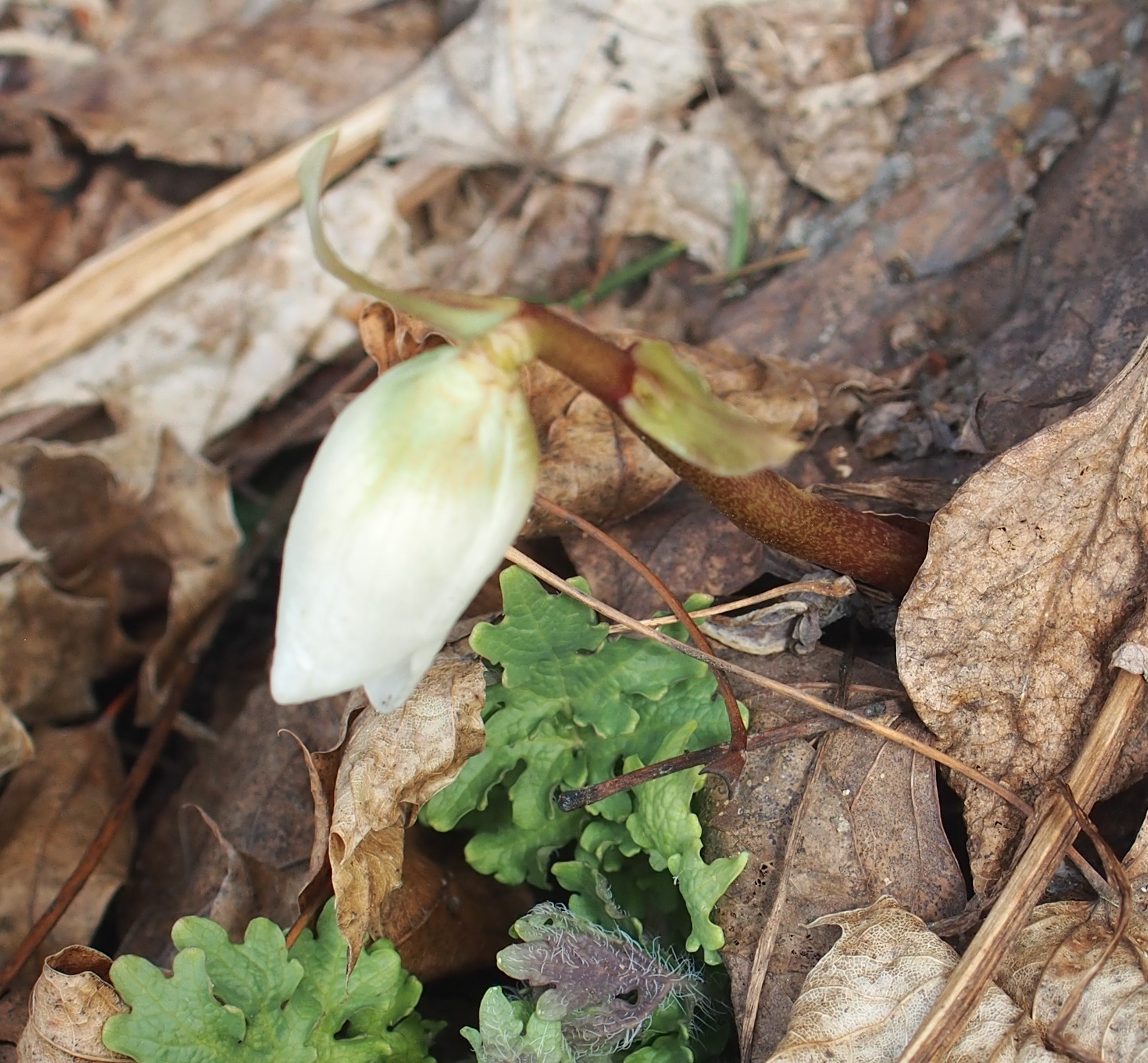
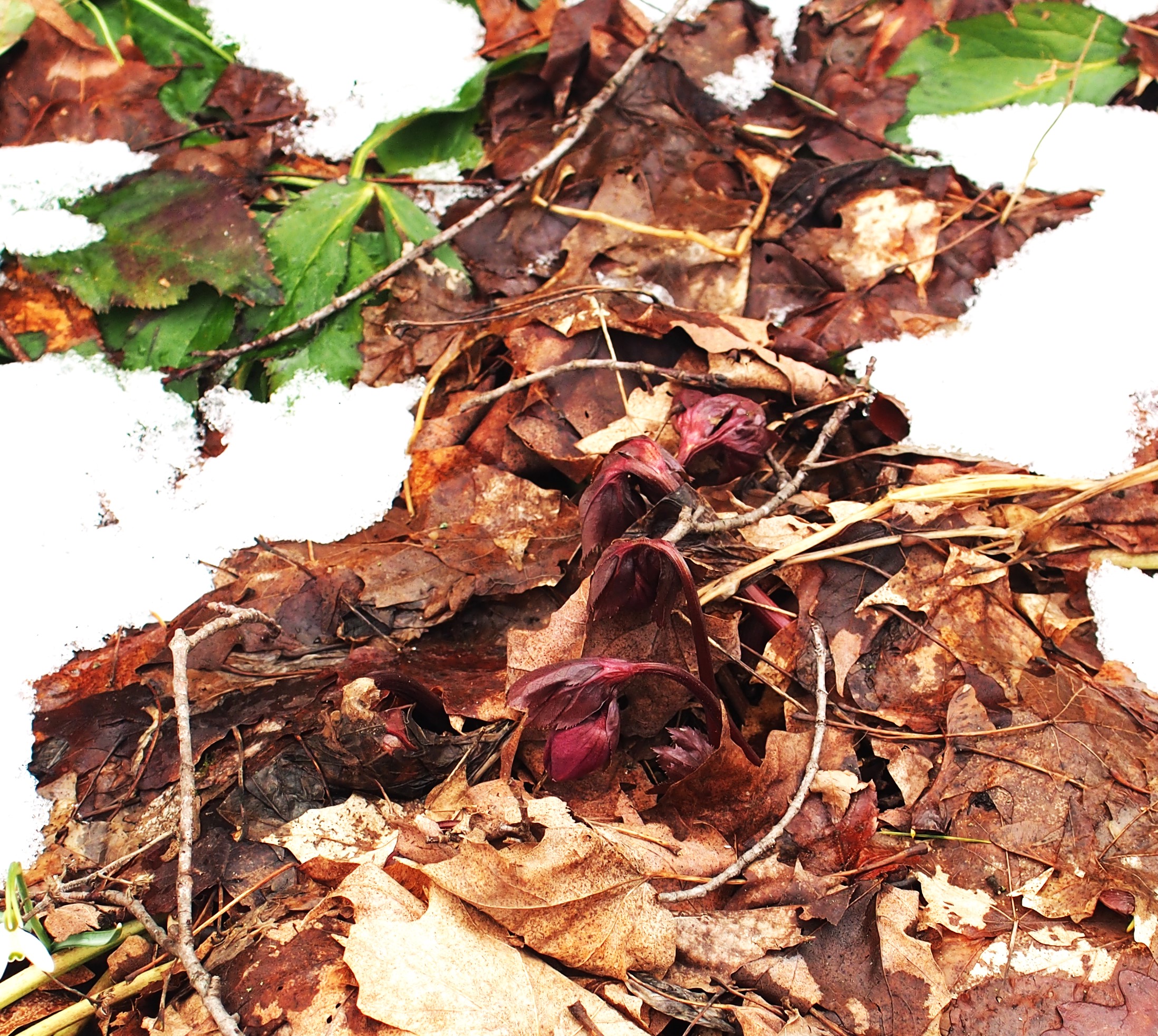

Here's a sort of Cabbage-like plant coming up in the back yard. I still don't recognize it. Second is not a mystery - it's just the Early Crocus tucking its petals together to keep warm from that lapful of snow. Third is the Hibiscus trying to gain some energy so that it can bloom once I put it back onto the deck rail a little later.
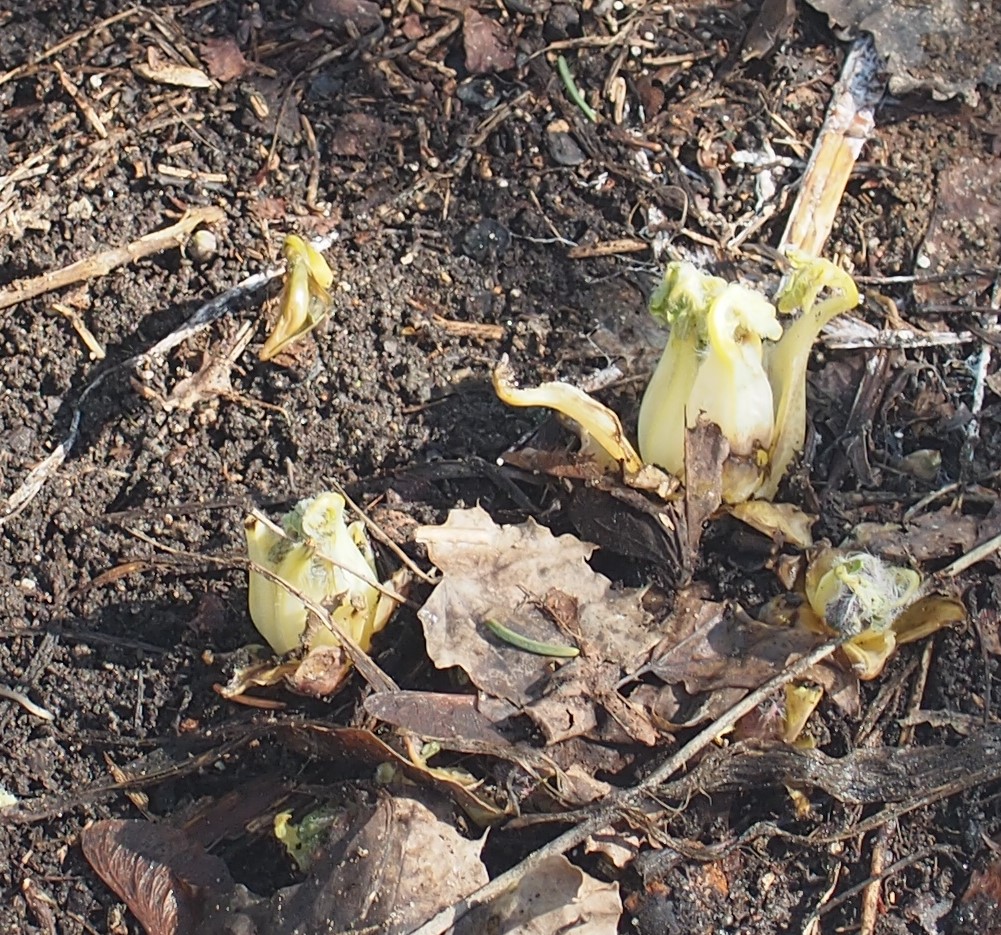


The path from the Flower Walk ends with this pair of pictures of another Stonefly, probably as usual of genus Allocapnia.
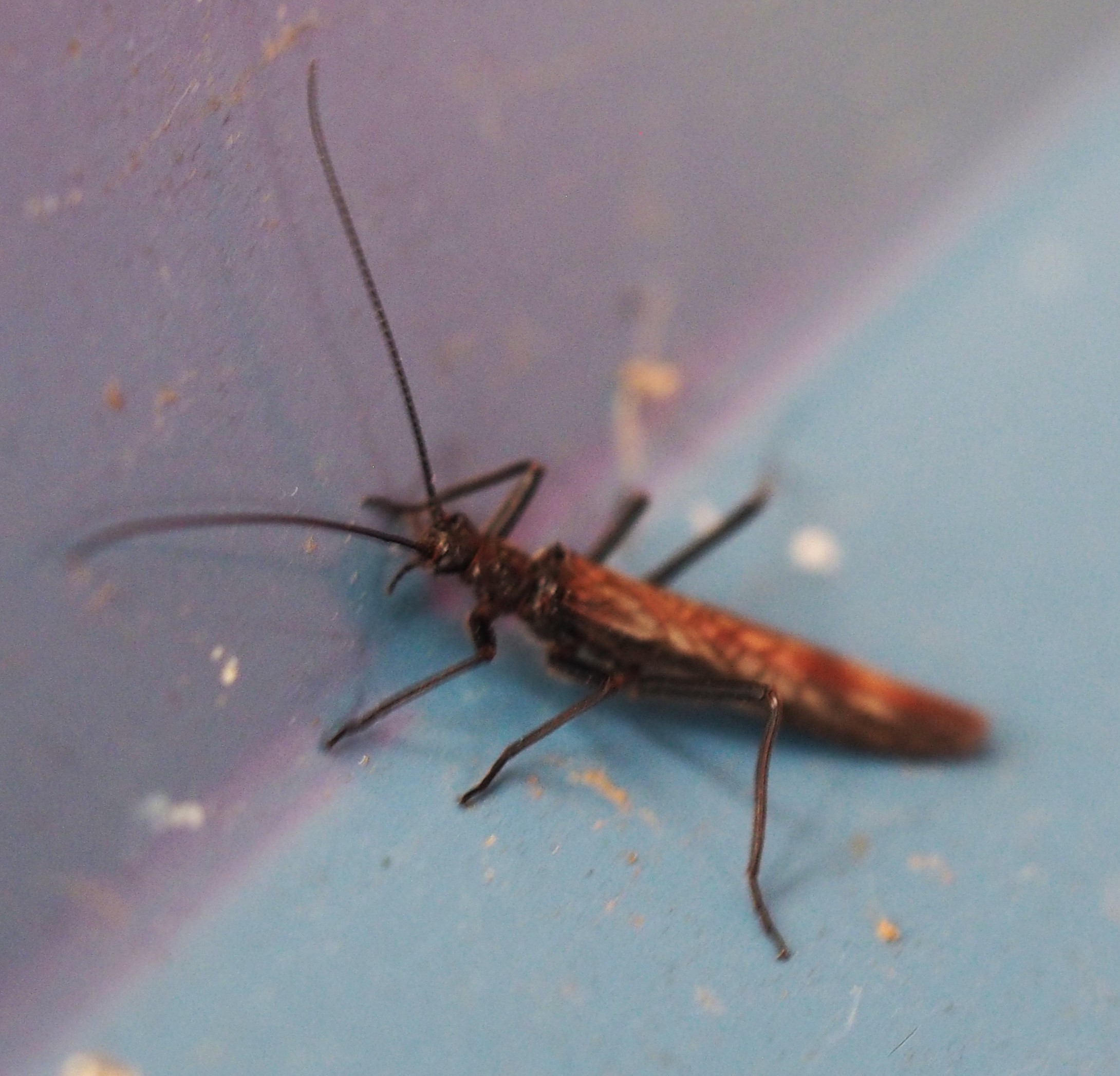
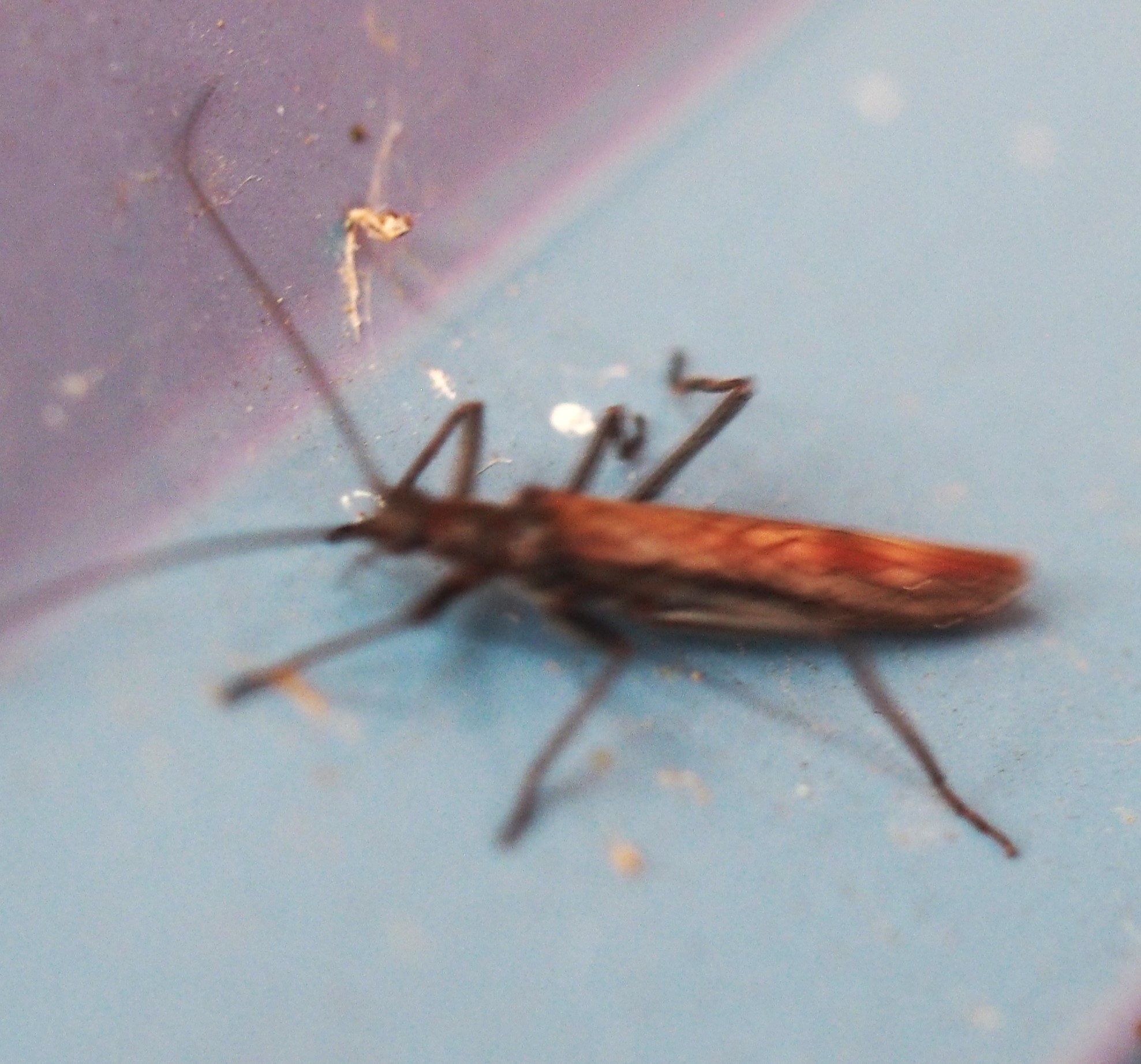
And hence to Spider Land. Here's one of those little Black Dwarf Spiders. It's followed by a similarly small, maybe even another Dwarf Spider, but in Red and Black. Next is another small Lyric Cobweaver, the one we saw at least a week ago with a little yellow Wasp larva on its "neck". That little larva must be preparing to do something dastardly, like devour the tiny spider bit by bit while keeping it alive long enough for the Wasp to mature.
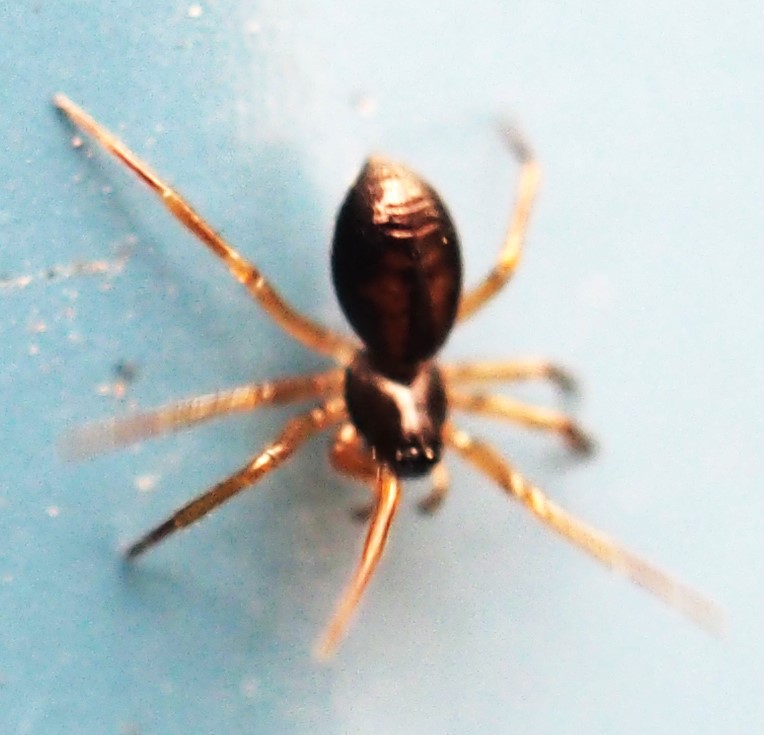
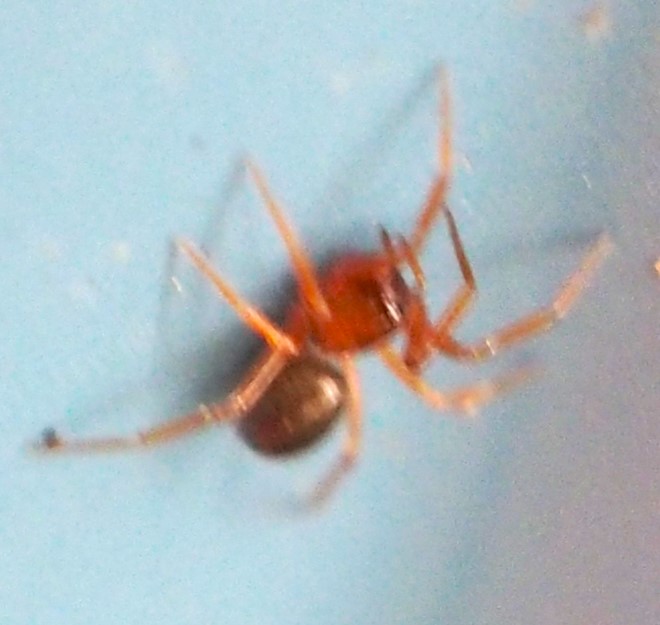
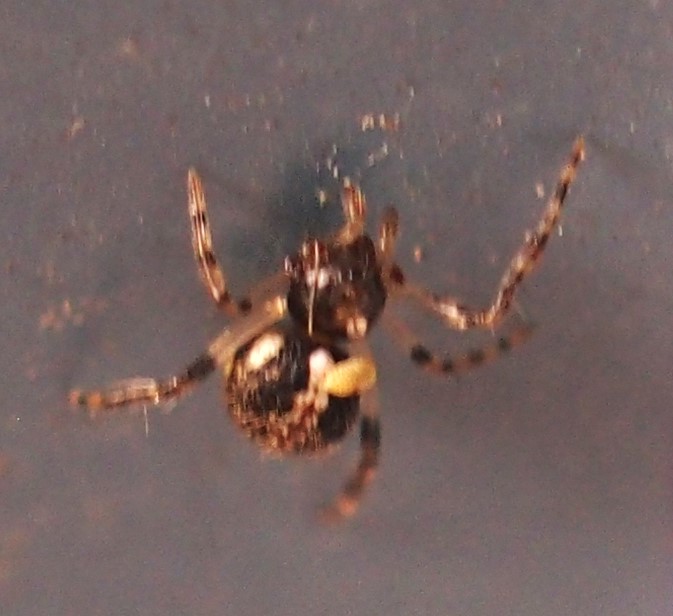
I haven't yet identified this very tiny spider with golden palps. But the second is our old friend the Crab Spider in genus Bassaniana, which is given away by the fact that the spider's carapace is heart-shaped. Third seems to be a dark-colored Spider which has captured some amorphous prey. There seem to be eight legs, just enough for the Spider. The prey (if that's what this is) seems to have a dearth of legs.
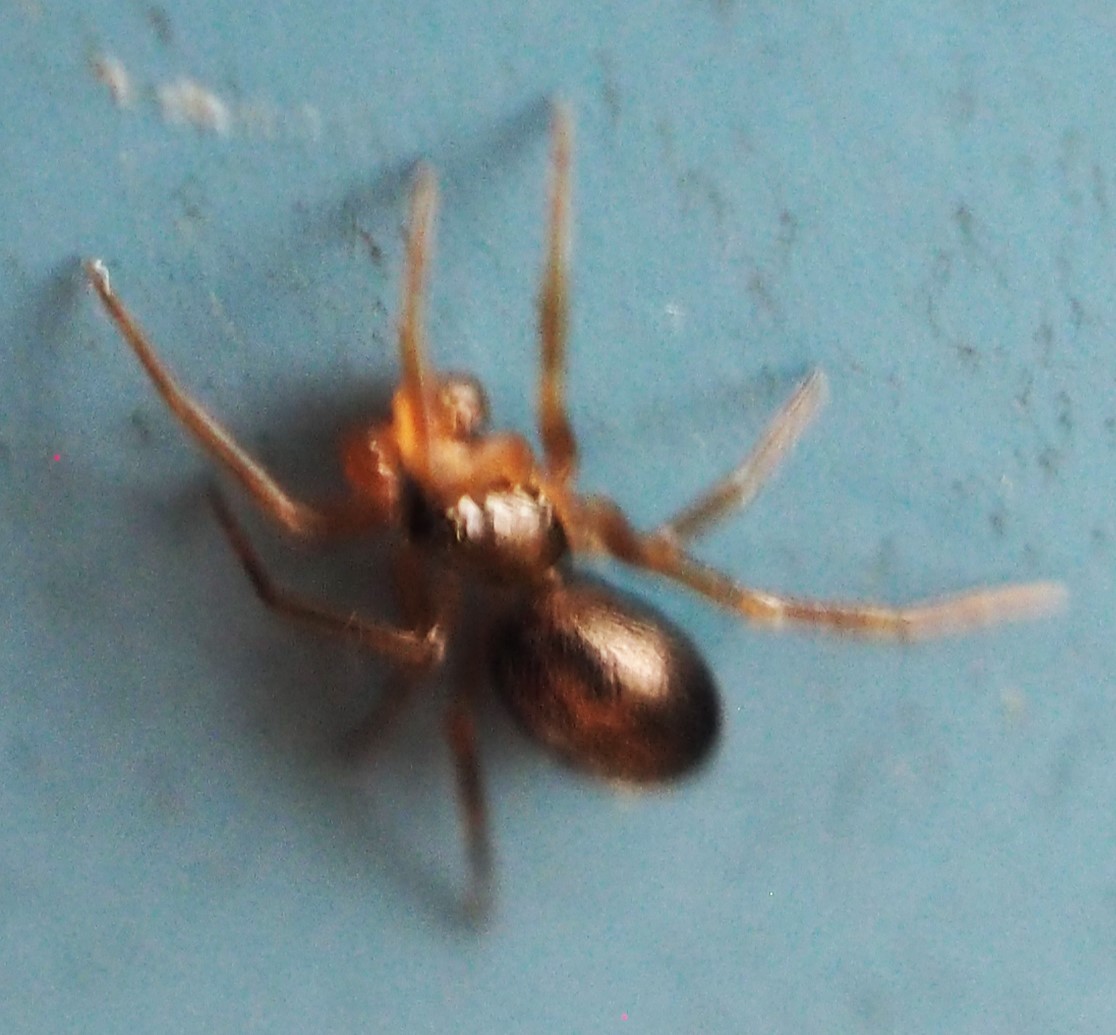
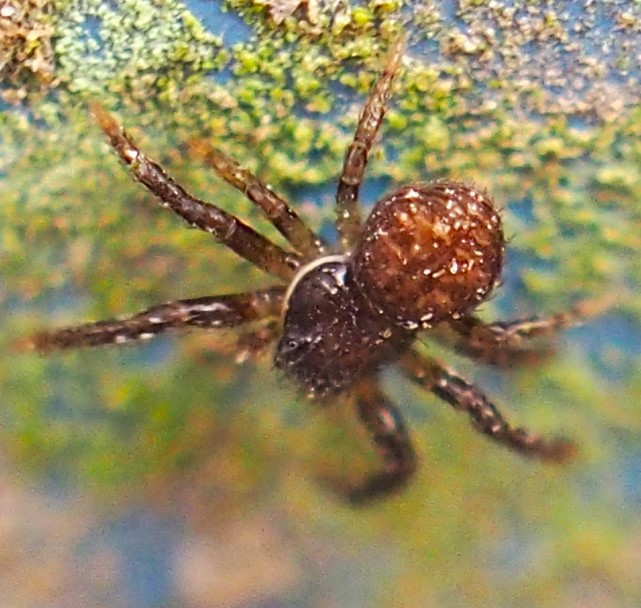
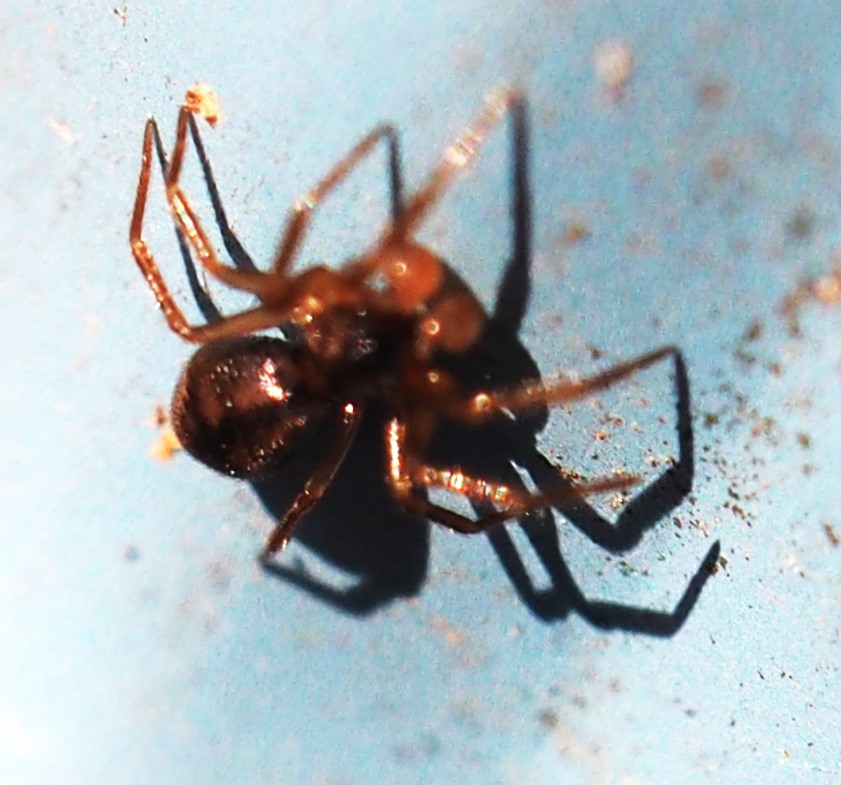
The Tuberculated Crab Spider was around this week anytime it was warm enough to stray out into the light. This one was out at about 3:13 pm on March 15, but there was probably at least one other visible at about the same time. I remember taking pictures and pictures and believe I spotted at least two, maybe three of these Spiders! It's so strange - I'd never seen one till this Spring and now they seem to be plentiful!
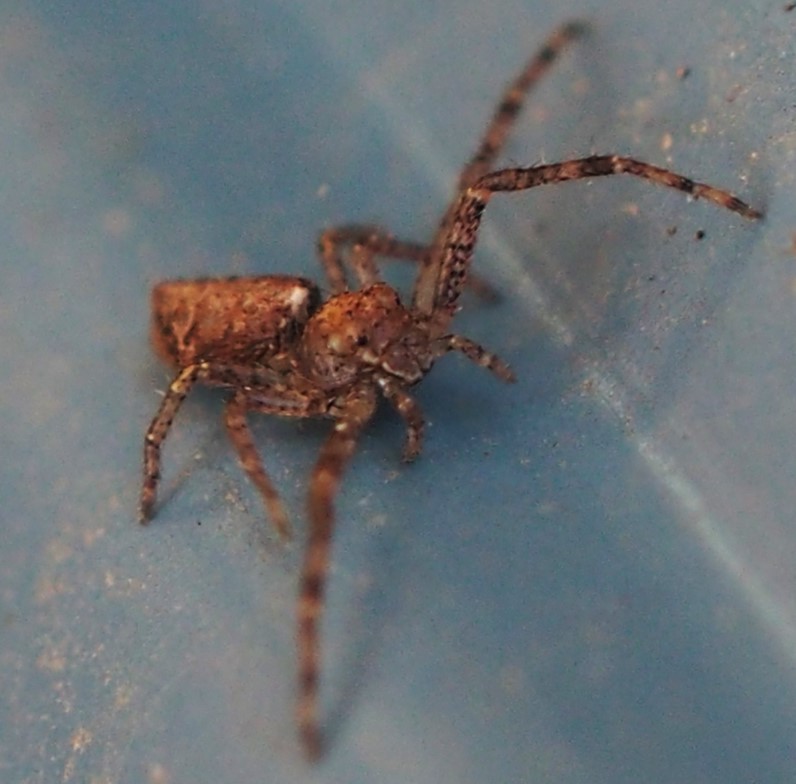
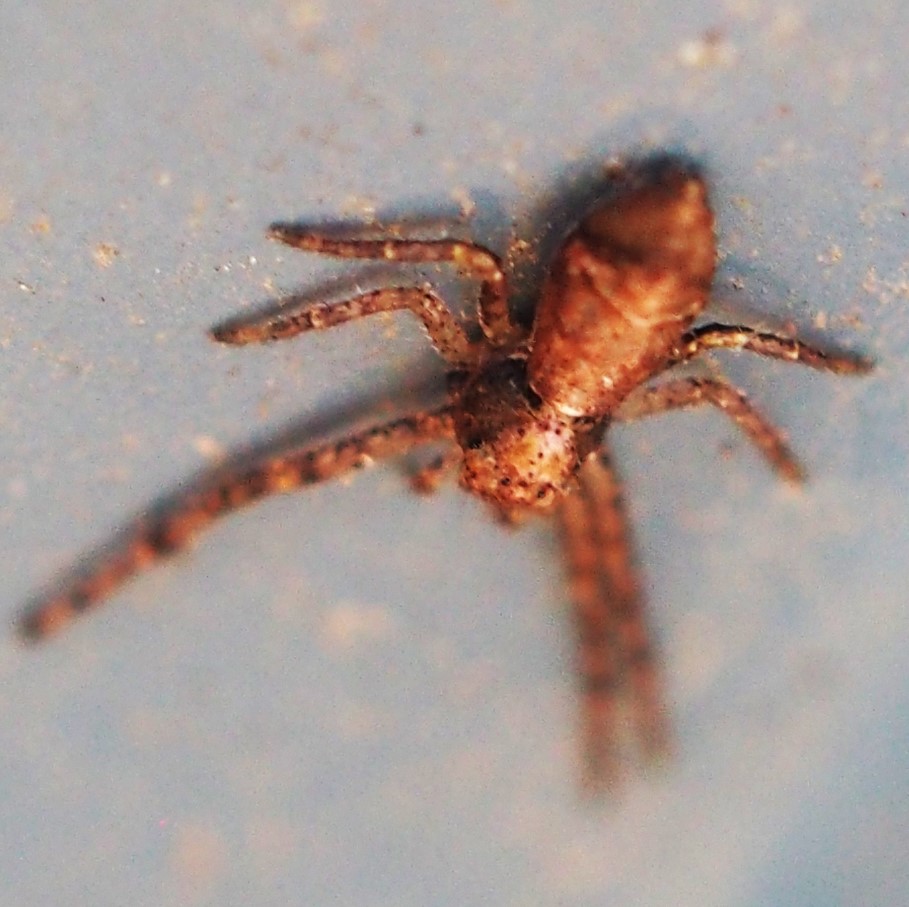
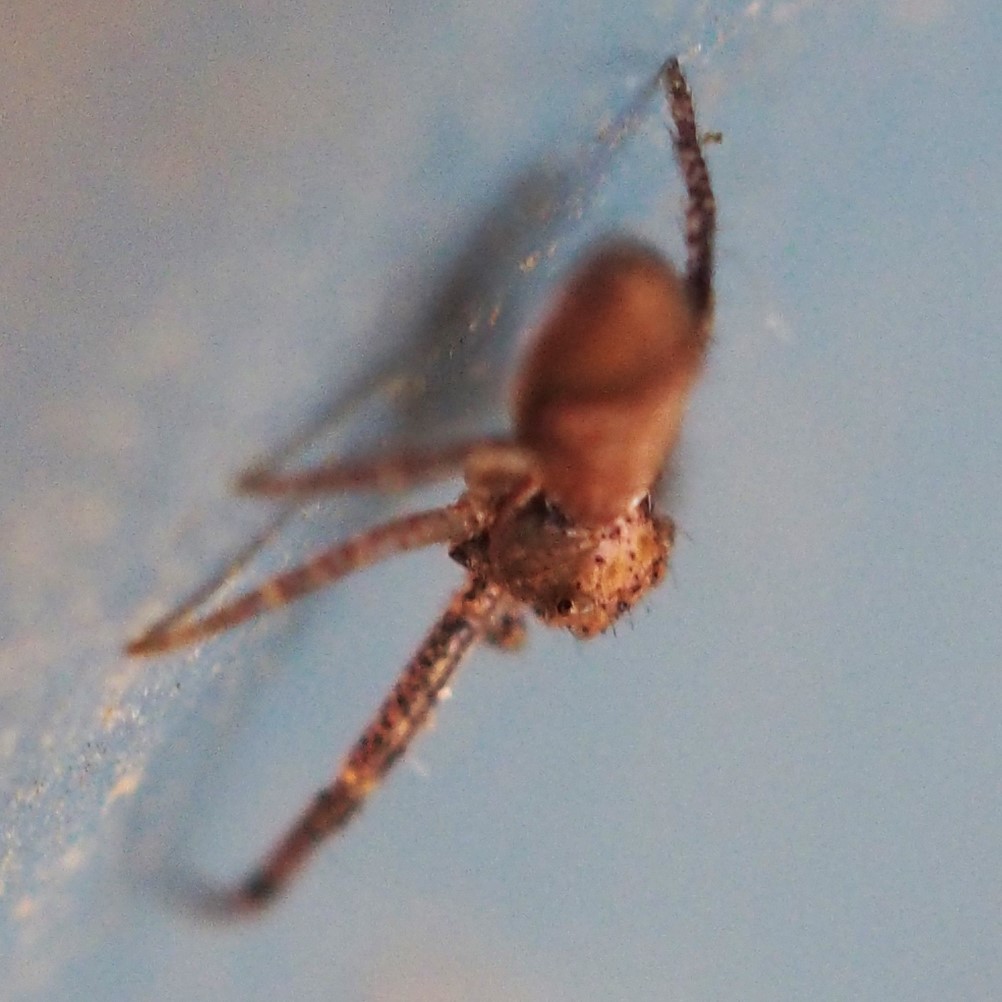
I saw at least three kinds of Springtails this week. This first kind might be Tomocerus minor. Picture 3 is from March 30, 2019 and was identified as T. minor.
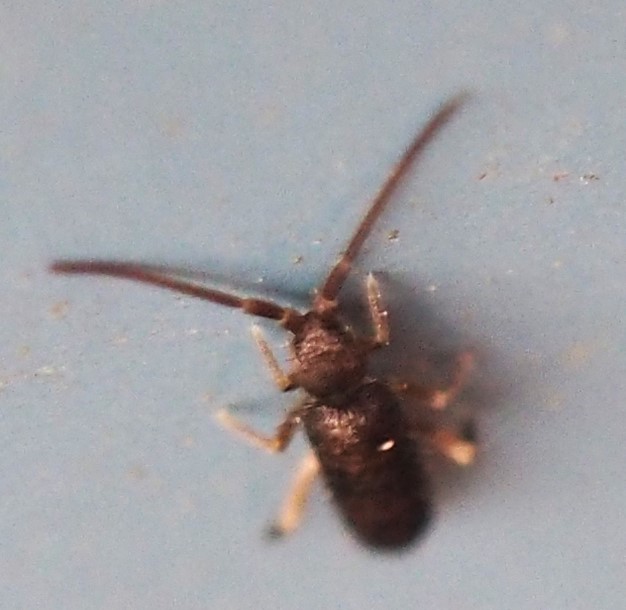
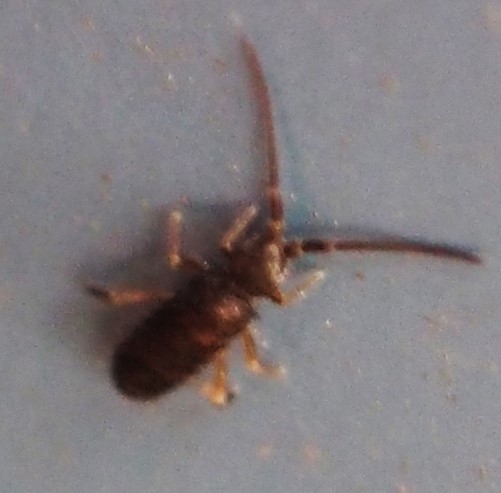

This second one seems to be in Subfamily Isotominae.

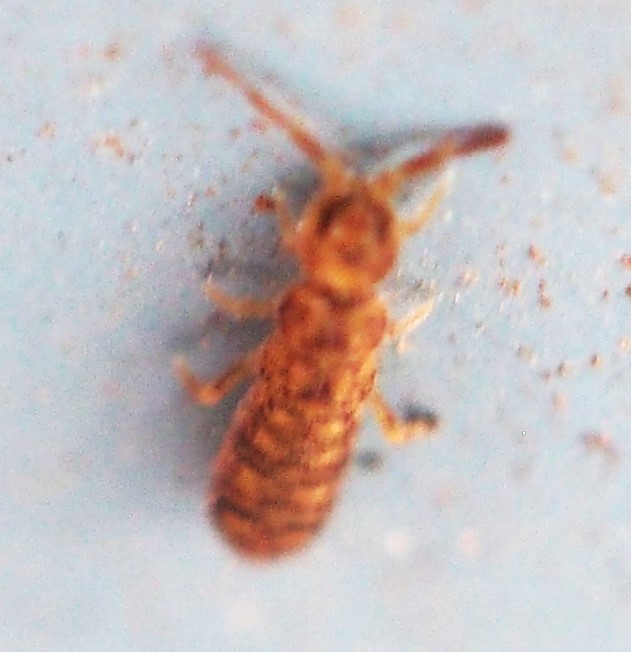

This one is apparently the Cosmopolitan Springtail, Entomobrya nivalis. Thanks to @blazeclaw of iNat for identifying so many Springtails!

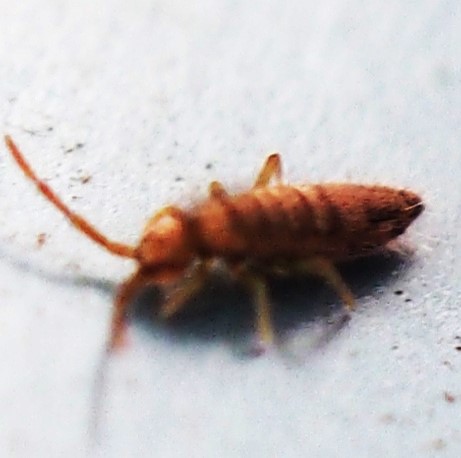
The Pond was frozen and defrosted and frozen and defrosted many times this week as the temperature rose into the 40's F and fell into the 20's F. Over and over. When it cleared I was able to get some fish pictures. I now suspect that the little fish that I found dead a couple of weeks ago was the twin of the blue and pink Shubunkin I got from the pet store last summer. Pictures have stopped showing that one while the other is still showing up. Picture 1 shows the pair on February 14. We'll miss the little guy. But look at the right half of picture 2, where a very small fish that first appeared in the Pond at the end of the summer seems to be swimming sturdily along. Welcome to it!
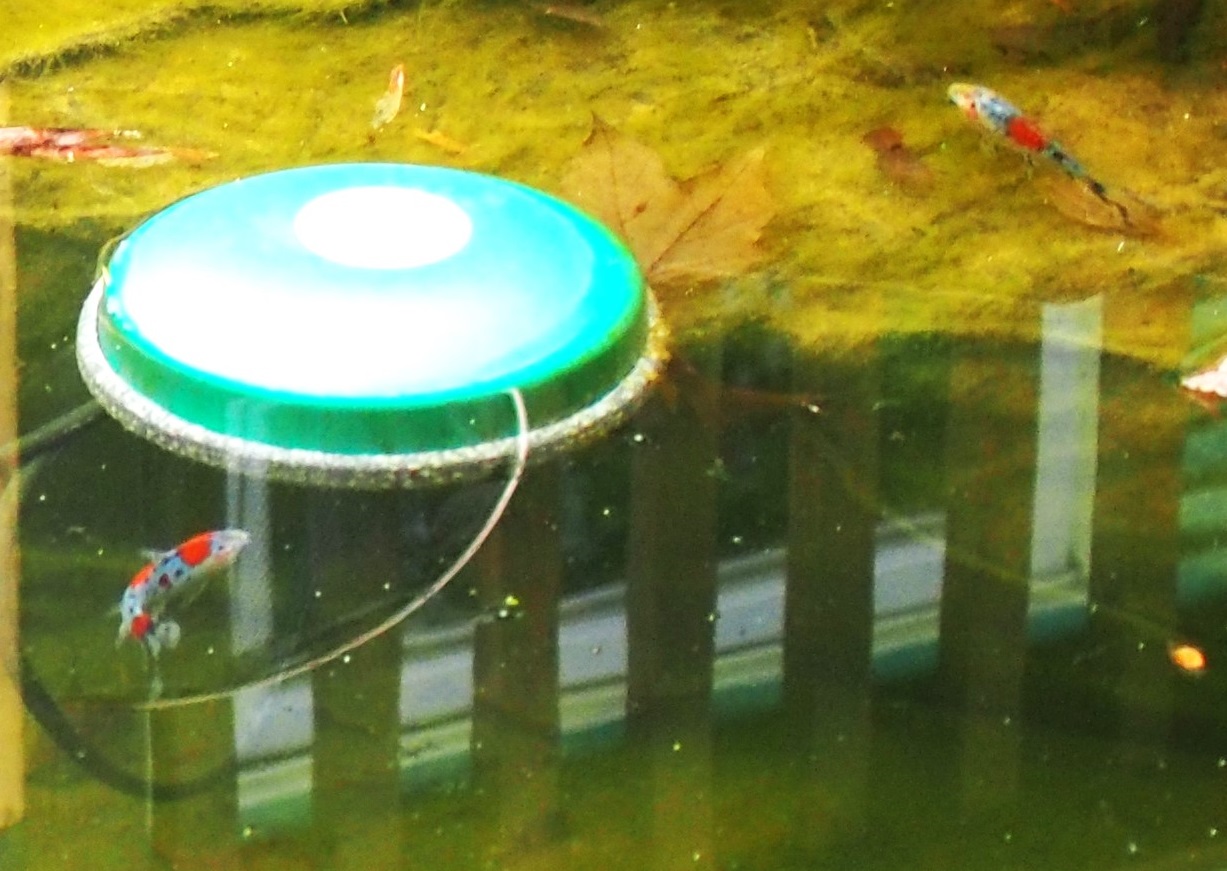
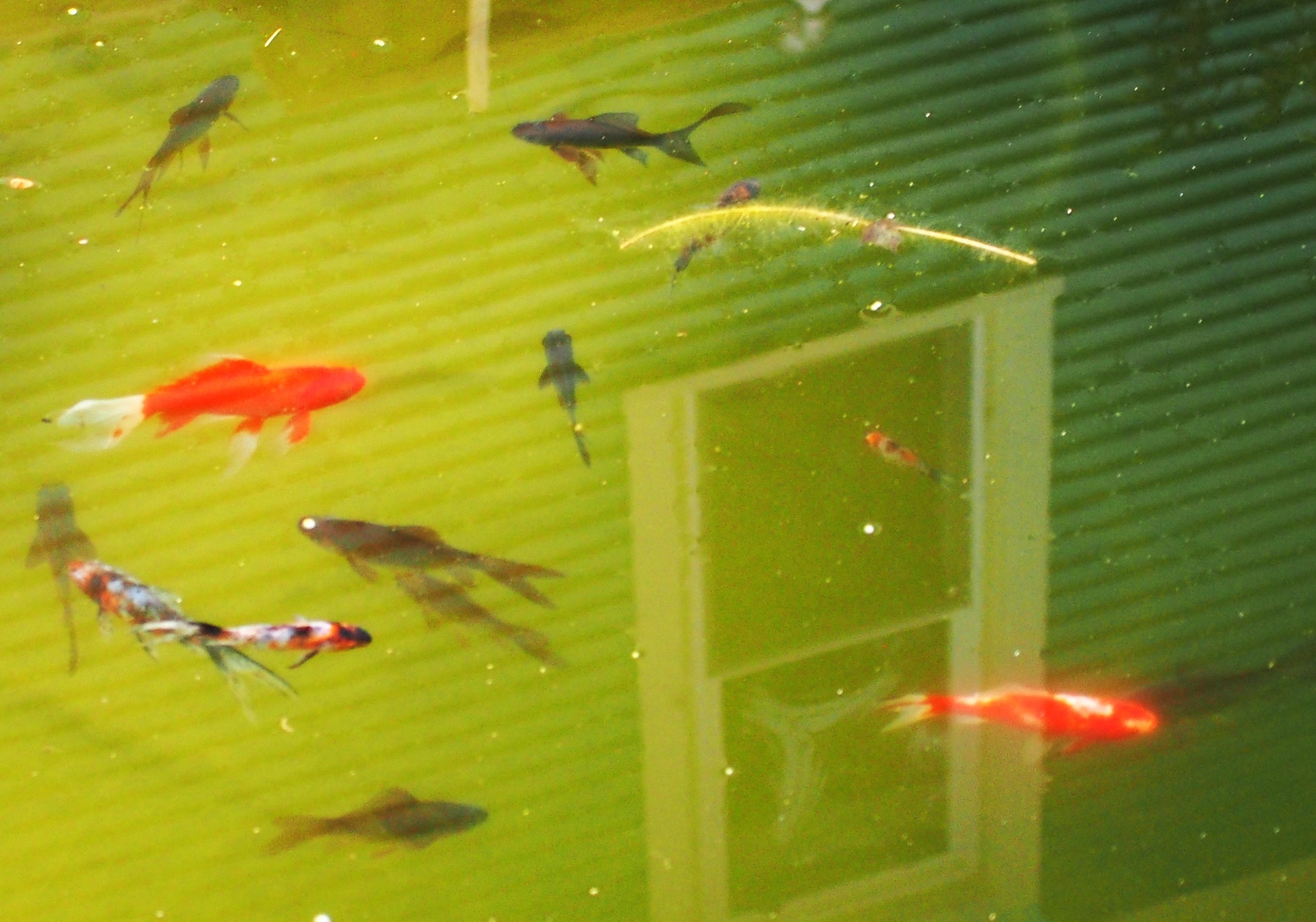
The snow from yesterday is almost gone. We've been warned to look out for more. The sun is shining seductively, and so it's time for me to get out there with my camera which seems to be learning about me. Everyone, take care, and see you next week I hope!
Love, Martha
No sooner did I finish off this much of the Blog, I started developing some pictures I took today.
Guess who's back? Oh I am so embarrassed!
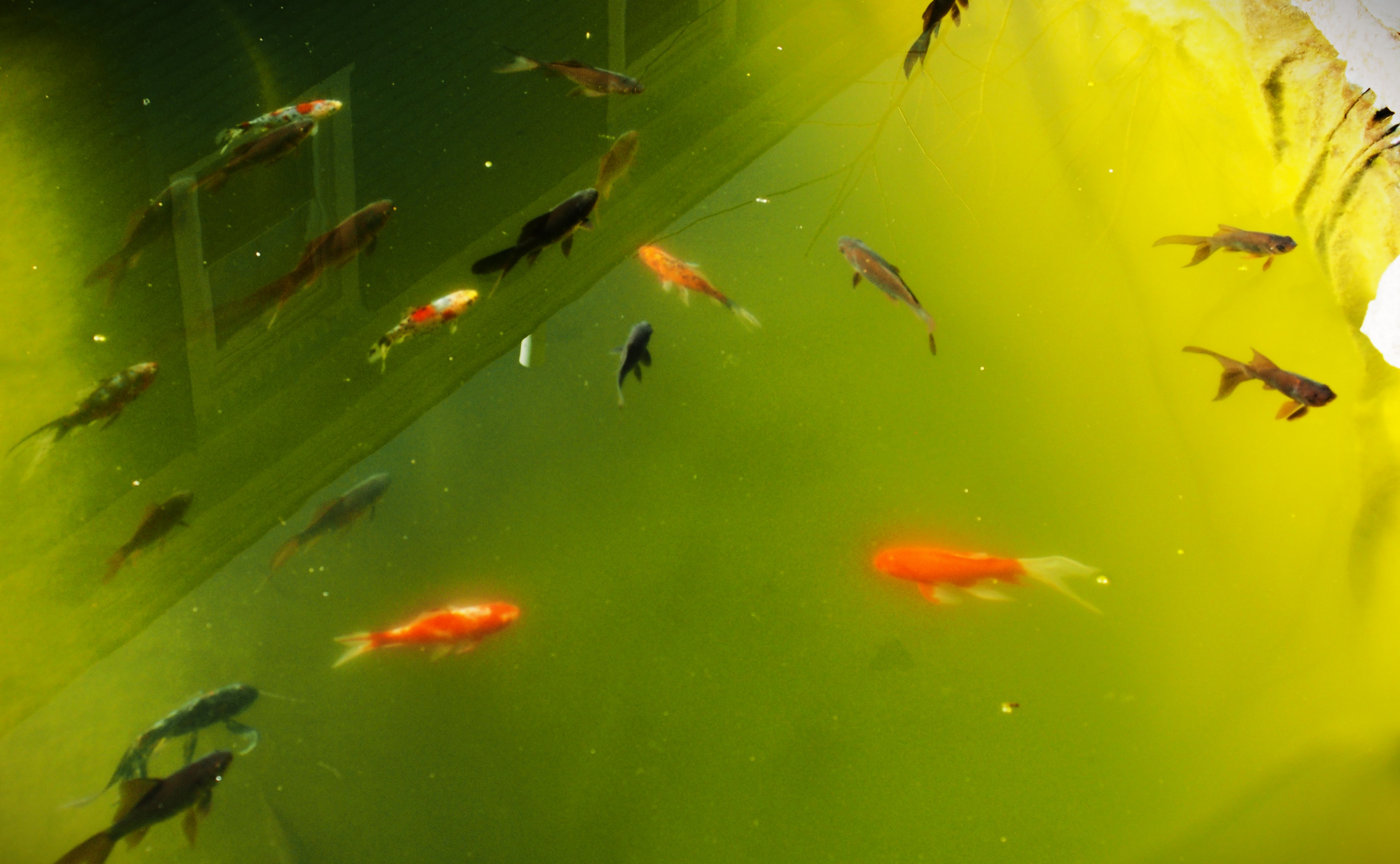
Back to March 12, 2023
Forward to March 26, 2023
Back to main menu
copyright Martha O'Kennon 2023














 just eclosed 3 13 23 1.jpg)
























































